Africa is big. Fifty-four countries big. Approximately 11.7 million square miles, or 20 percent of Earth’s land area, big. Roughly 1.3 billion people, 3,000 indigenous groups, and 2,000 languages big. To say nothing of its age, with a human history that began some 200,000 years ago and since witnessed the rise and fall of empires, survived political wars and religious conflicts, seen colonizations and reclamations of identity.


54 Structures That Prove African Architecture Is Widely Underrated
Yet, despite its size and the individual heritages of its 54 nations, Africa is often synopsized in the image of a safari playground, referred to as if it were a country rather than the world’s second-largest continent. And of all the areas in which its culture has been overlooked, none has been so neglected as its architecture.
With vernacular structures that reconcile man’s ingenuity with the natural world, cathedrals to rival Europe’s and mosques to match the Middle East’s, monuments to the histories that have shaped nations, and a moving target of modern designs that has evolved throughout the ages, there’s a lot to learn about the buildings that buttress the continent. Here are 54 examples of African architecture, one for every country, that prove just how widely underrated it has been.
1. Clay Palace of Ghardaïa — Algeria

Photo: Sun_Shine/Shutterstock
Deep in the Algerian Sahara is the M’zab Valley, a desert oasis housing a pentapolis of ancient fortified cities. Berber followers of Ibadi Islam known as Mozabites established these cities, or ksour, during the 10th century, and their impressive preservation earned the valley a UNESCO inscription in 1982. Ghardaïa, one of the five ksour, showcases traditional M’Zab architecture through its still-standing clay and gypsum structures, among them this Gaudí-esque palace.
2. Currency Museum — Angola
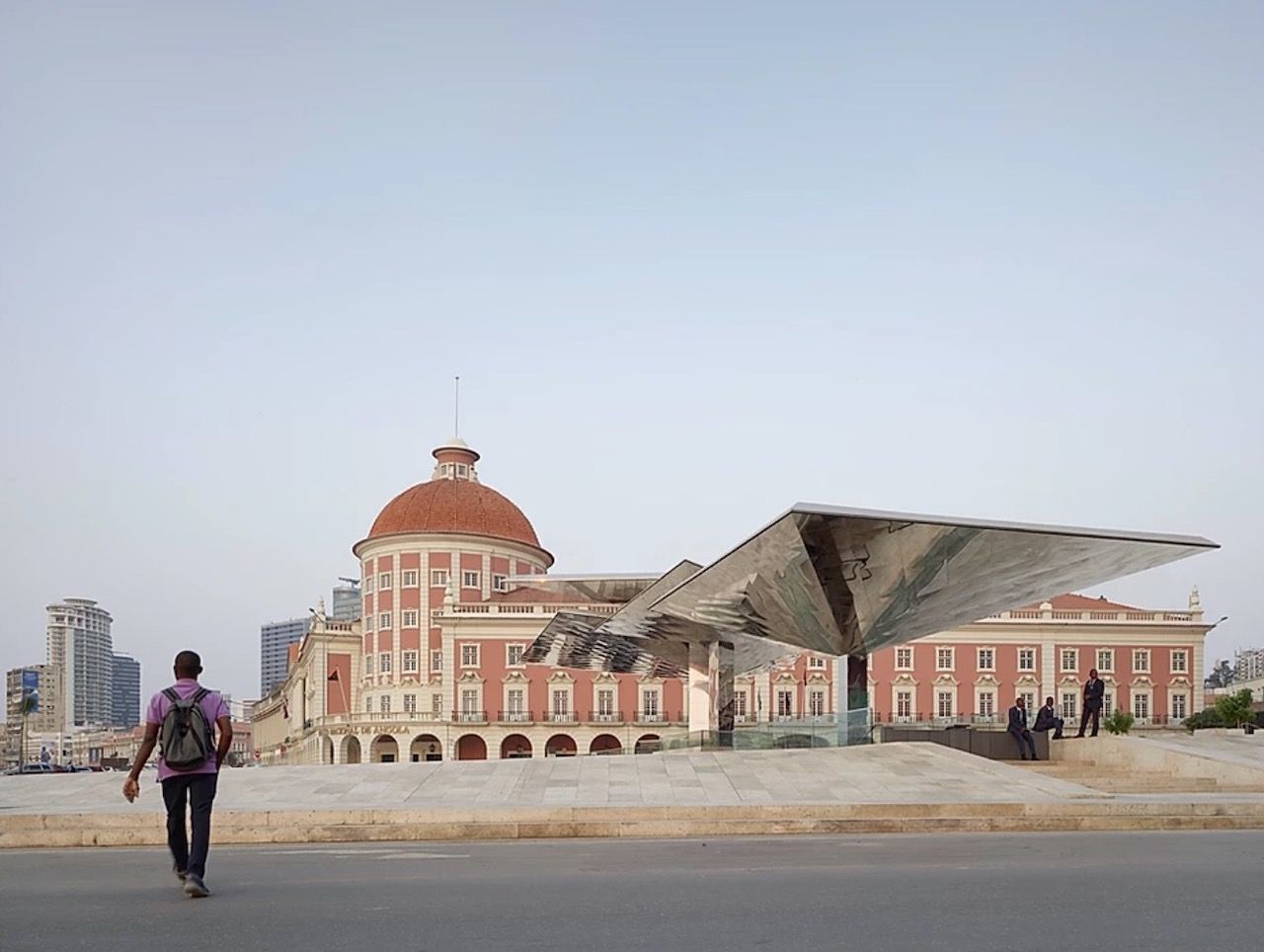
Photo: Fabrice Fouillet /Costalopes
Across the street from the National Bank of Angola, another of capital city Luanda’s landmarks, sits this striking Currency Museum. Together backdropped by the harborfront, the two buildings exemplify two eras of Angolan architecture: The bubblegum-pink bank nods to the nation’s Portuguese colonial past while the museum reflects the modern aesthetic of local architecture firm Costalopes. The bulk of the Currency Museum was built below Major Saidy Mingas Square, with the aboveground roof doubling as a modern monument in downtown Luanda.
3. Tata-Somba houses — Benin
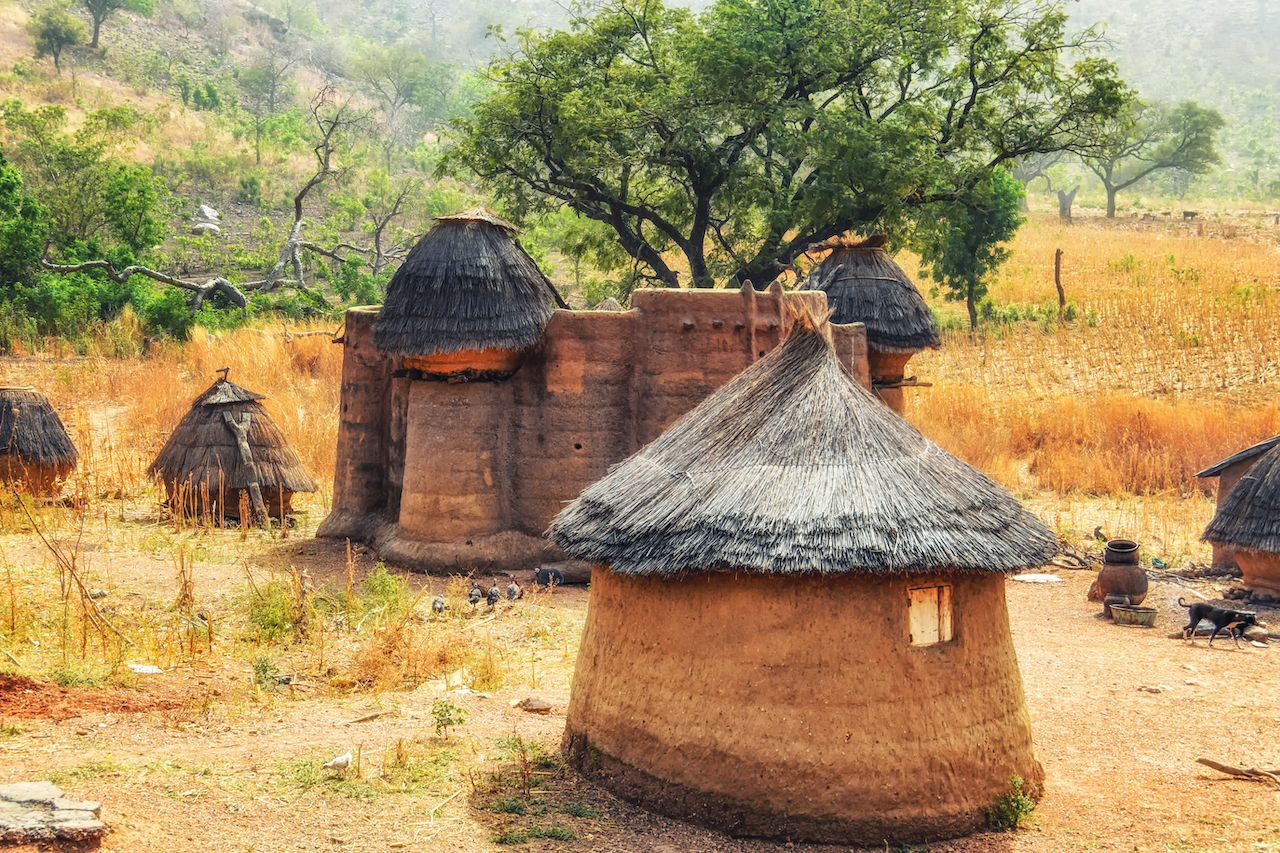
Photo: Atosan/Shutterstock
The Somba people of northwest Benin are known for being skilled builders. Traditional Somba dwellings are mighty earthen fortresses called tata-somba houses. They’re typically two stories tall and have mud walls, straw roofs, and turrets like you might see on a castle. Though similar to the tekyete structures found in neighboring Togo, tata-somba houses uniquely have designs engraved on both inner and outer walls. These abstract, geometric patterns are hand-drawn by Somba women and viewed as symbols of fertility and prosperity.
4. ISKCON Gaborone — Botswana
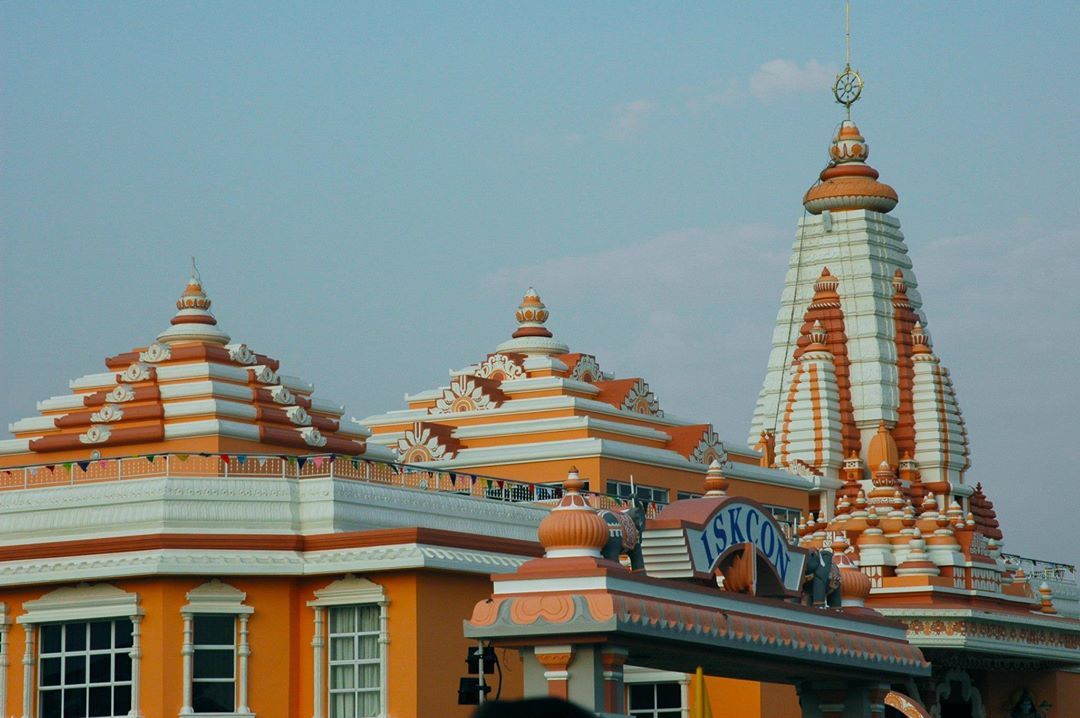
Photo: Iskcon Botswana/Facebook
Though Christianity is the predominant faith in Botswana, religions ranging from Islam, Hindusim, and Quakerism to Baha’i and Badimo are also practiced. This cheery temple in the nation’s capital, Gaborone, represents the International Society for Krishna Consciousness, otherwise known as the Hare Krishna movement. Among the temple’s many adornments are twin tiger sculptures guarding the front and a giant lotus flower hanging over the entrance.
5. Painted Gurunsi houses of Tiébélé — Burkina Faso
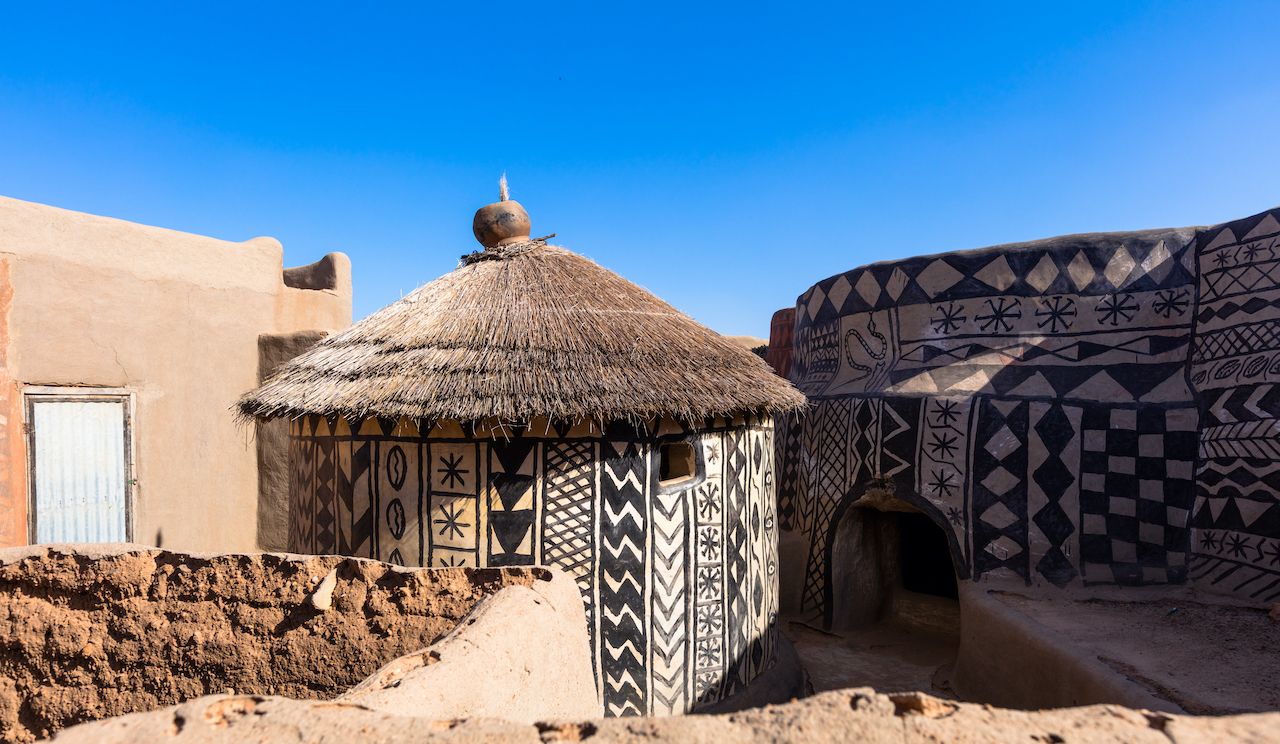
Photo: Bildagentur Zoonar GmbH/Shutterstock
In the village of Tiébélé, which is occupied by the Kassena people of the greater Gurunsi ethnic group of Ghana and Burkina Faso, there exist hand-painted houses dating as far back as the 15th century. These simple yet elaborate structures, called sukhala, are found in the chief’s complex and feature designs drawn by Gurunsi women, while men are customarily responsible for building. Materials like mud, chalk, clay, coal, and a lacquer made from beans are used to create the black, white, beige, and red structures, some of which serve as mausoleums.
6. Le Champignon — Burundi
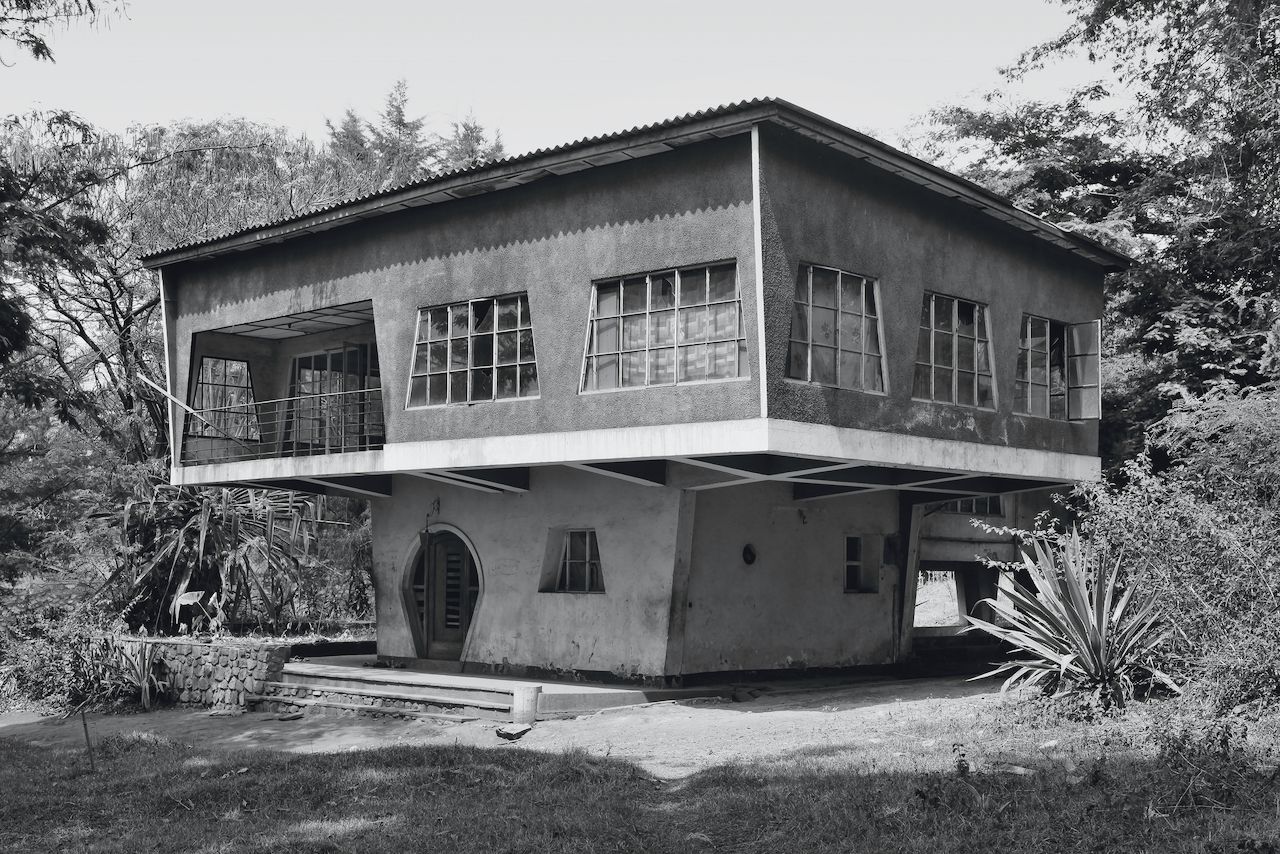
Photo: Jean Molitor Photography
Bauhaus architecture arrived in Burundi, a Belgian colony until 1962, around the mid-20th century. Several examples of the style exist in Bujumbura, the nation’s largest city, while Le Champignon, so-coined for its resemblance to a mushroom, offers one example in the capital, Gitega. Photographer Jean Molitor, who has captured Bauhaus architecture all around the world, describes the former residence as “idiosyncratic, a little playful, and individual,” noting that the interior design is equally striking and “flooded with light.”
7. Palácio do Povo — Cabo Verde
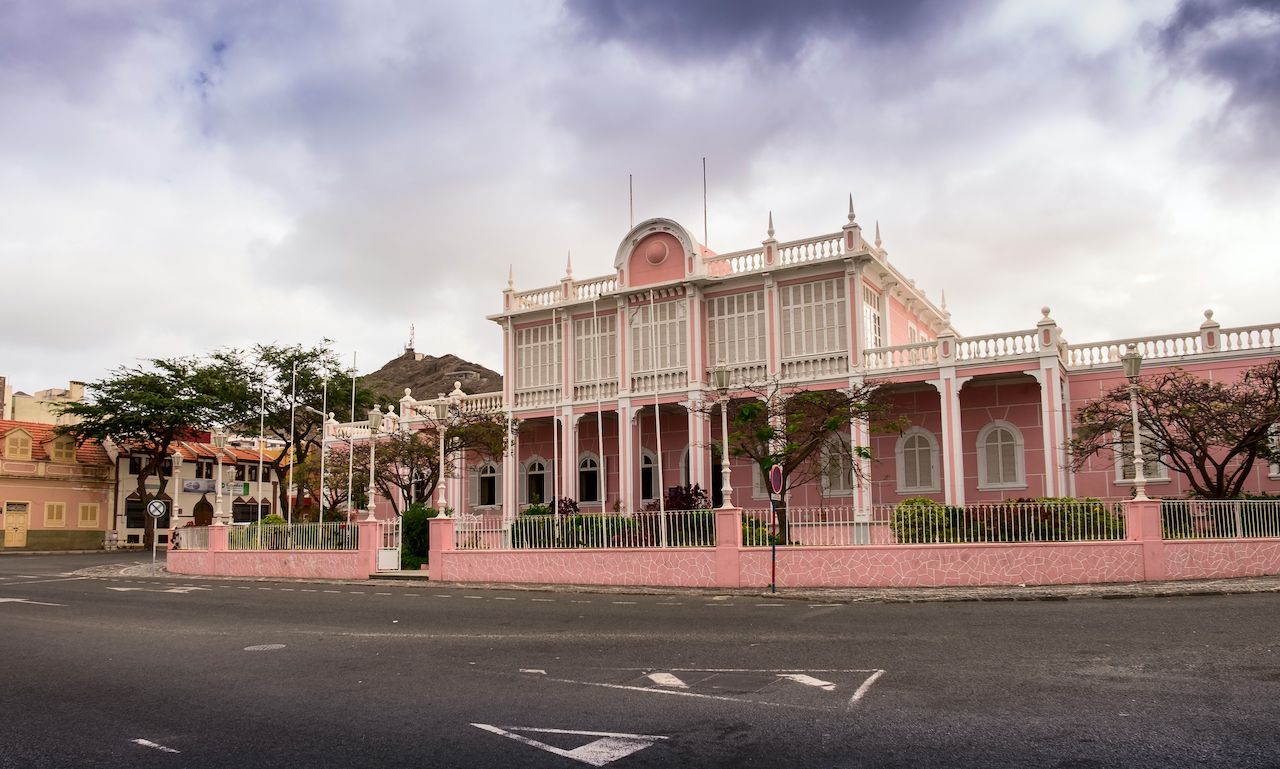
Photo: MikhailBerkut/Shutterstock
This bright pink Portuguese colonial was built in downtown Mindelo, a city on the island of São Vicente, toward the end of the 1800s. It was originally called the Palácio do Governo, or Government Palace, though the name was changed to the People’s Palace after Cabo Verde won its independence in 1975. Today, it hosts a regular rotation of cultural exhibits and shares its landmark status with Mindelo’s characteristic pastel Pombaline and neoclassical structures.
8. Reunification Monument — Cameroon
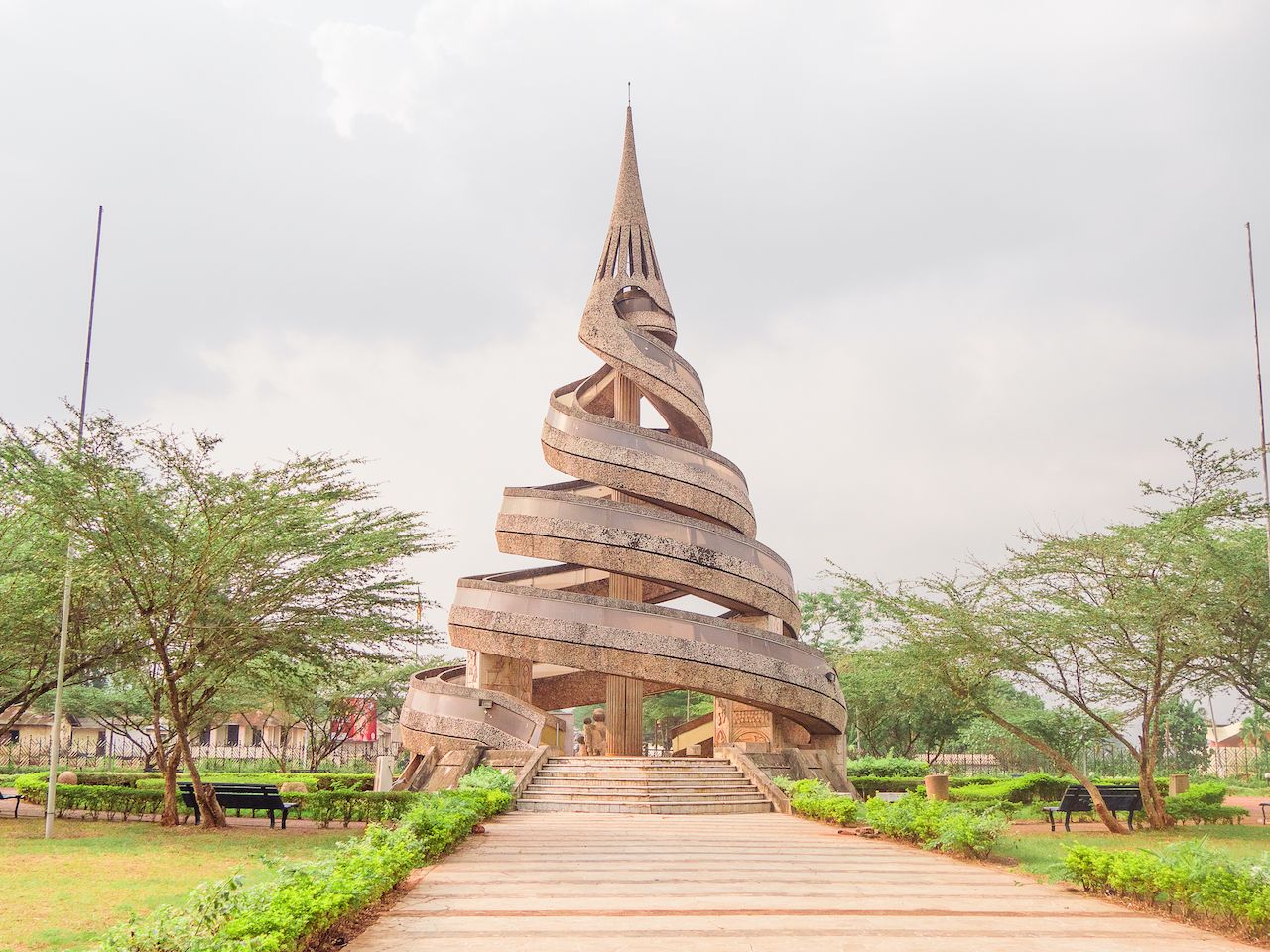
Photo: cyrilleyonnta/Shutterstock
Cameroon has a long, complicated colonial history. It was occupied by German settlers in the late 19th century and later claimed by both French and British troops after World War I. It remained divided between French Cameroun and British Cameroon until 1960 when the former gained its independence. British Cameroon soon followed suit, reuniting with the rest of the country in February 1961. This monument was erected in the capital city of Yaoundé the next decade, with the different colors blending together to represent unification.
9. Notre-Dame of Bangui — Central African Republic
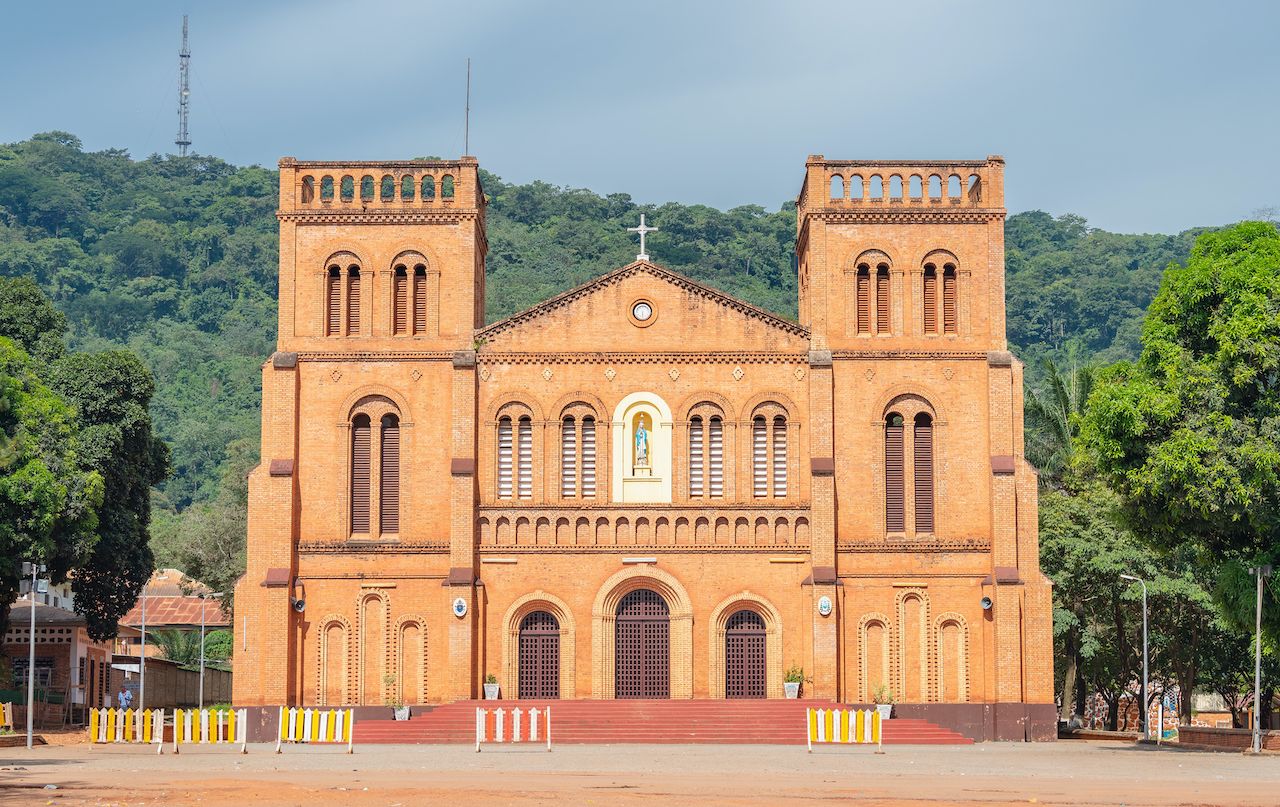
Photo: mbrand85/Shutterstock
Known in full as the Cathédrale Notre-Dame de l’Immaculée Conception, this Roman Catholic cathedral towers over Bangui, the capital of the Central African Republic. Its architecture is reminiscent of many structures found in former French colonies with tropical climates, from the use of red brick to the tall towers erected on either side. Built in the mid-1900s, Bangui’s very own Notre-Dame was solidified as a national icon after appearing on a 1964 stamp.
10. Mud huts of Gaoui — Chad
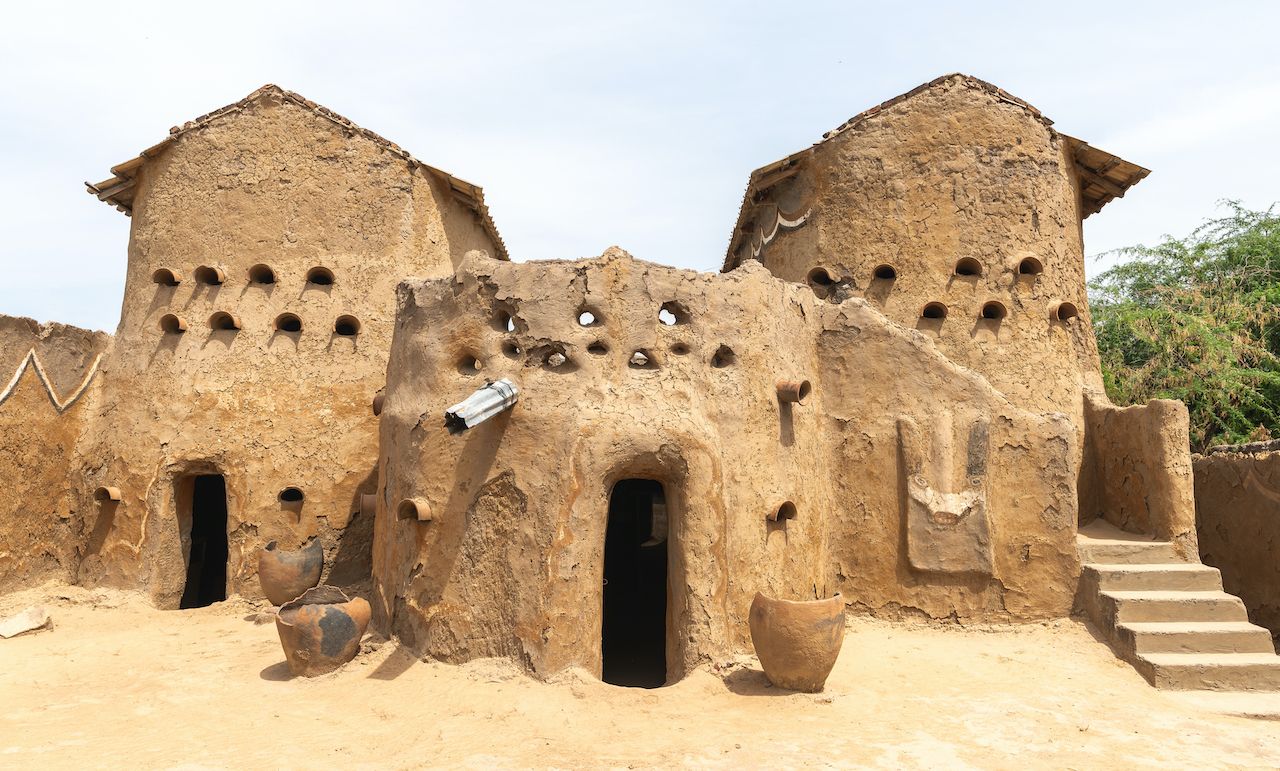
Photo: mbrand85/Shutterstock
Found in the Sahel that connects the Sahara Desert to the Sudanian Savanna, the village of Gaoui, the former capital of the Sao civilization, plays host to some of the finest examples of Chad’s vernacular architecture. The village’s earthen huts are made primarily of mud and straw, and many feature painted embellishments like colorful trim lining the top, bottom, and entryway.
11. Grande Mosquée d’Iconi — Comoros
Photo: Evgeny Shulin/Shutterstock
Comoros is an island nation in the Indian Ocean that’s made up of three islands. Iconi is a small town on the largest island, aptly called Grande Comore. Mosques are common throughout Comoros as the majority of its residents practice Sunni Islam. Pictured is the Grand Mosque of Iconi. Architecturally speaking, the town is also known for hosting the ruins of the Palais de Kavirdjeo, built as the seat of the Sultanate of Bambao in the 16th century.
12. St. Paul’s Cathedral — Côte d’Ivoire
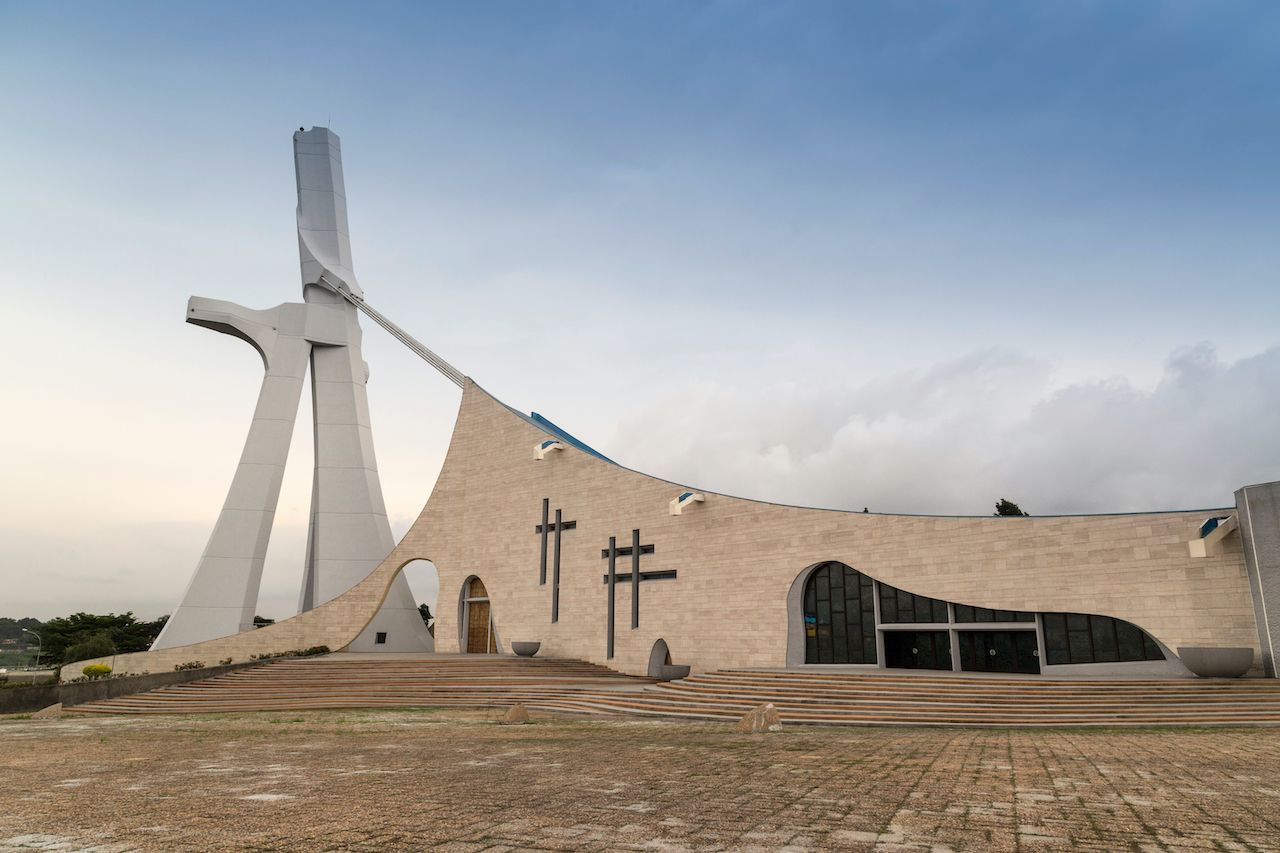
Photo: newphotoservice/Shutterstock
This Roman Catholic cathedral in Abidjan catches the eye with its distinct futuristic design, the work of Italian architect Aldo Spirito. Not only does a massive cross appear to hold up the sloping structure via cables, but the interior also features six stained-glass murals and intricate mosaic panels that incorporate both biblical and locally inspired imagery. Though not as large as the Basilica of Our Lady of Peace in Ivorian capital Yamoussoukro, the largest cathedral in Africa, St. Paul’s Cathedral ranks among the runners up.
13. Afar huts — Djibouti

Photo: Hiren Ranpara/Shutterstock
The Afar people of the Horn of Africa inhabit parts of Ethiopia, Eritrea, and Djibouti. Their traditional tent-like dwellings are made by constructing circular frames from thin branches, then covering the structures in mats woven from locally sourced materials. Pictured are a series of Afar huts set up on the beach on Devil’s Island in Djibouti’s eastern Ghoubbet-el-Kharab cove.
14. Tour de l’Echangeur — Democratic Republic of the Congo

Photo: Mr.Kabwende/Shutterstock
Cheekily referred to as Kinshasa’s Eiffel Tower, this nearly 700-foot Exchange Tower, or Limete Interchange Tower, sits at the entrance to the Democratic Republic of the Congo’s capital, Kinshasa. It was designed to honor the nation’s first prime minister, Patrice Emery Lumumba, at the request of former president Mobutu Sese Seko, who also envisioned the tower as a symbol of the city. Since its completion in 1974, the tower has fulfilled Seko’s wish, featuring in various works by Congolese artists, notably the paintings of Kinshasa-born Pit Kalala.
15. Cairo Citadel — Egypt
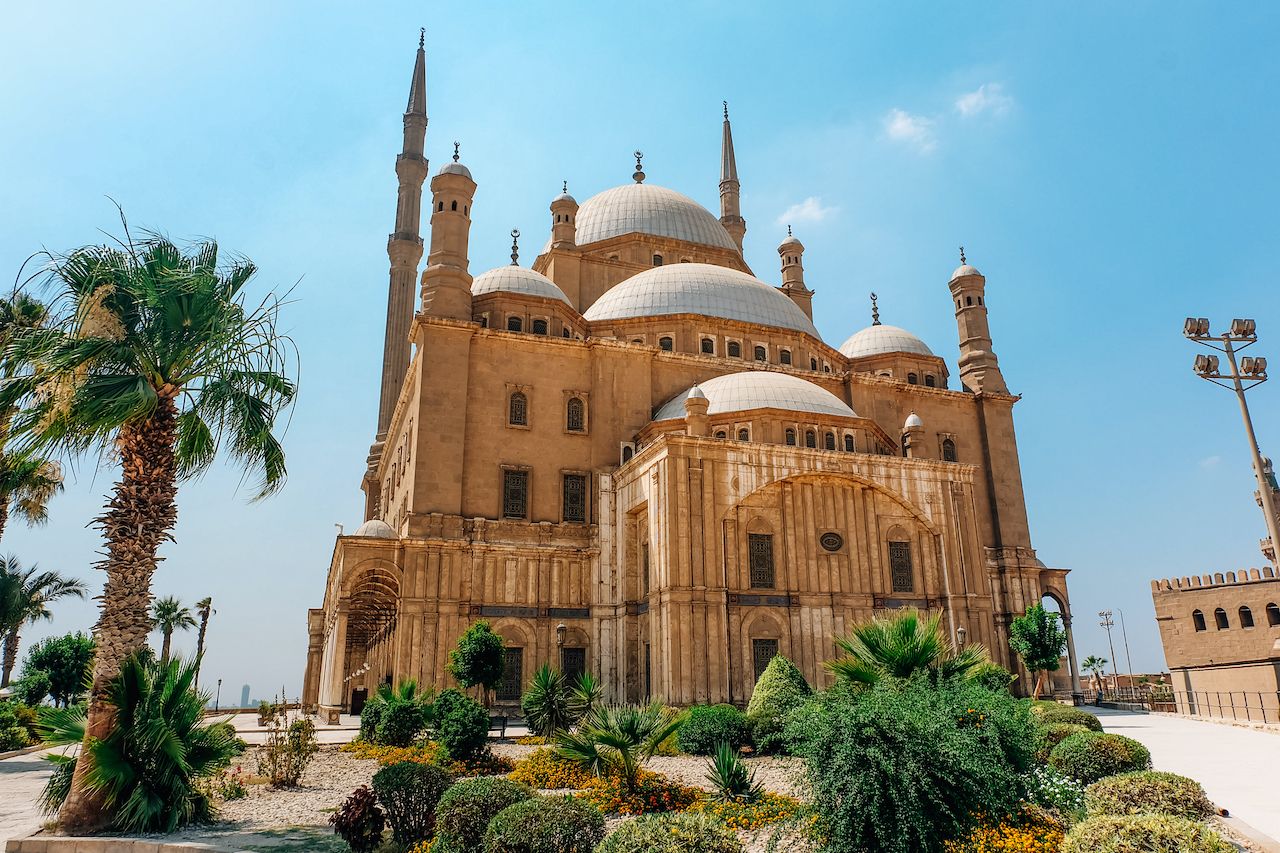
Photo: Parnupong Pawapotako/Shutterstock
Ancient Egyptian architecture is not all pyramids and temples. Standing atop a hill like a sentinel watching over Cairo is a medieval citadel commissioned by Saladin, the first sultan of Islamic-era Egypt. It was built in the 12th century to protect the city from crusaders and served as a seat of government for nearly a millennium. Inside the complex are multiple mosques, palaces, and museums. Today, the view from the Cairo Citadel is not only juxtaposed by the city’s modern architecture but also offers a glimpse of the Giza pyramids, weather permitting.
16. Torre de la Libertad — Equatorial Guinea
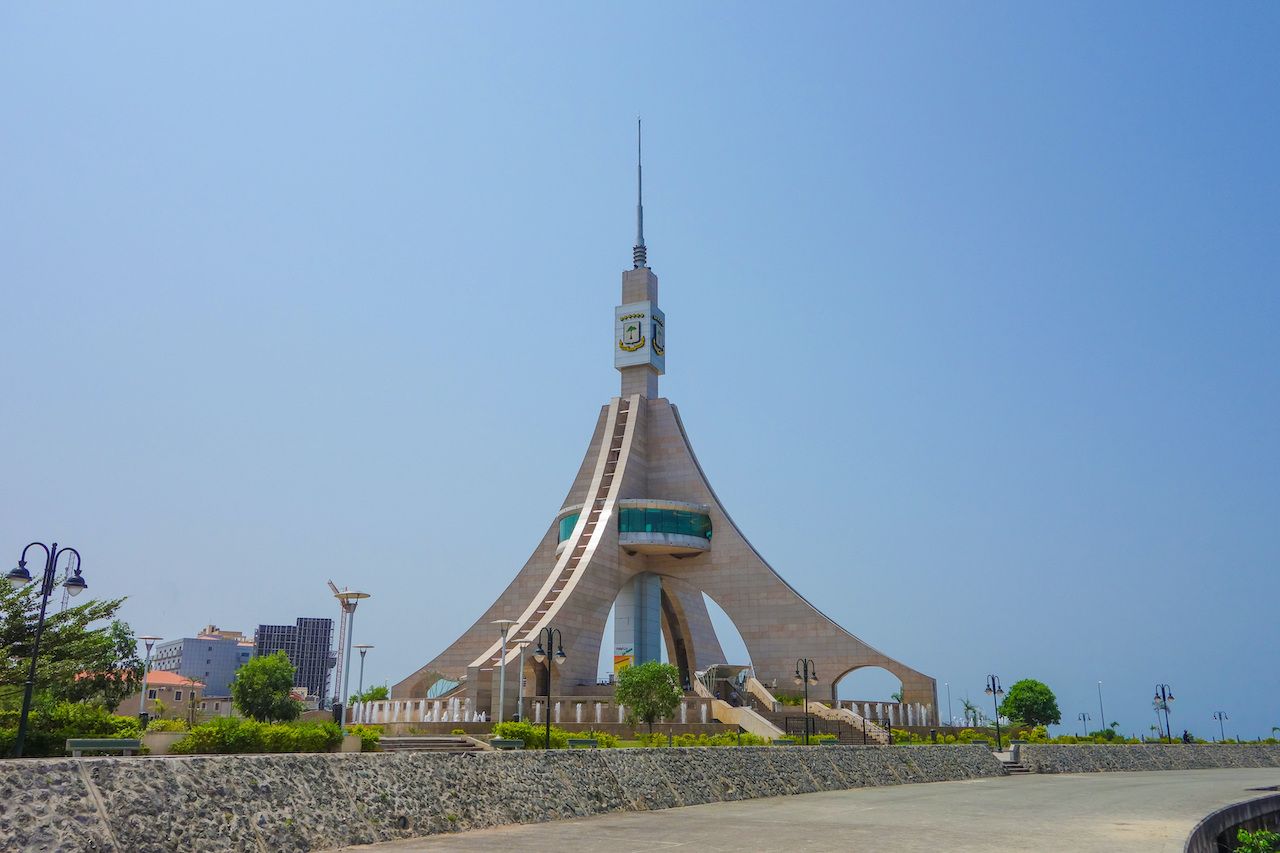
Photo: alarico/Shutterstock
A symbol of Equatorial Guinea’s independence from Spain, achieved in 1968, the Torre de la Libertad, or Freedom Tower, was inaugurated in major port city Bata in 2011. During the day, the tower is backdropped by the city’s coastline. In the evening, it’s lit up by Vegas-like LED lights, and there’s a revolving restaurant at the top where diners can gaze out at the city and sea.
17. Fiat Tagliero — Eritrea

Photo: Edward Denison/Asmara Heritage Project
Modernist architecture is a defining feature of Eritrea’s capital, Asmara. In 2017, it earned the entire city earned a UNESCO inscription. Arguably the most iconic structure is the Fiat Tagliero service station, which embodies the modernist tenets of function over flash and a veneration of technology. Built in 1938 by Italian architect Giuseppe Pettazi, who modeled it after an airplane, the station is also a rare example of futurist architecture realized outside of a theoretical context. Though on the surface it resembles any Italian fascist design, associate professor of architecture Edward Denison, whose work with the Asmara Heritage Project earned the city its World Heritage status, argues that such a structure could not exist in Europe or anywhere else. Between the local basalt used to construct much of Asmara and the Eritrean labor and craftsmanship required, the city’s modernist architecture is uniquely African. “If you peel away the skin,” he says of many of the city’s structures, “you’ll see they’re actually quite traditional.”
18. Beehive huts — Eswatini
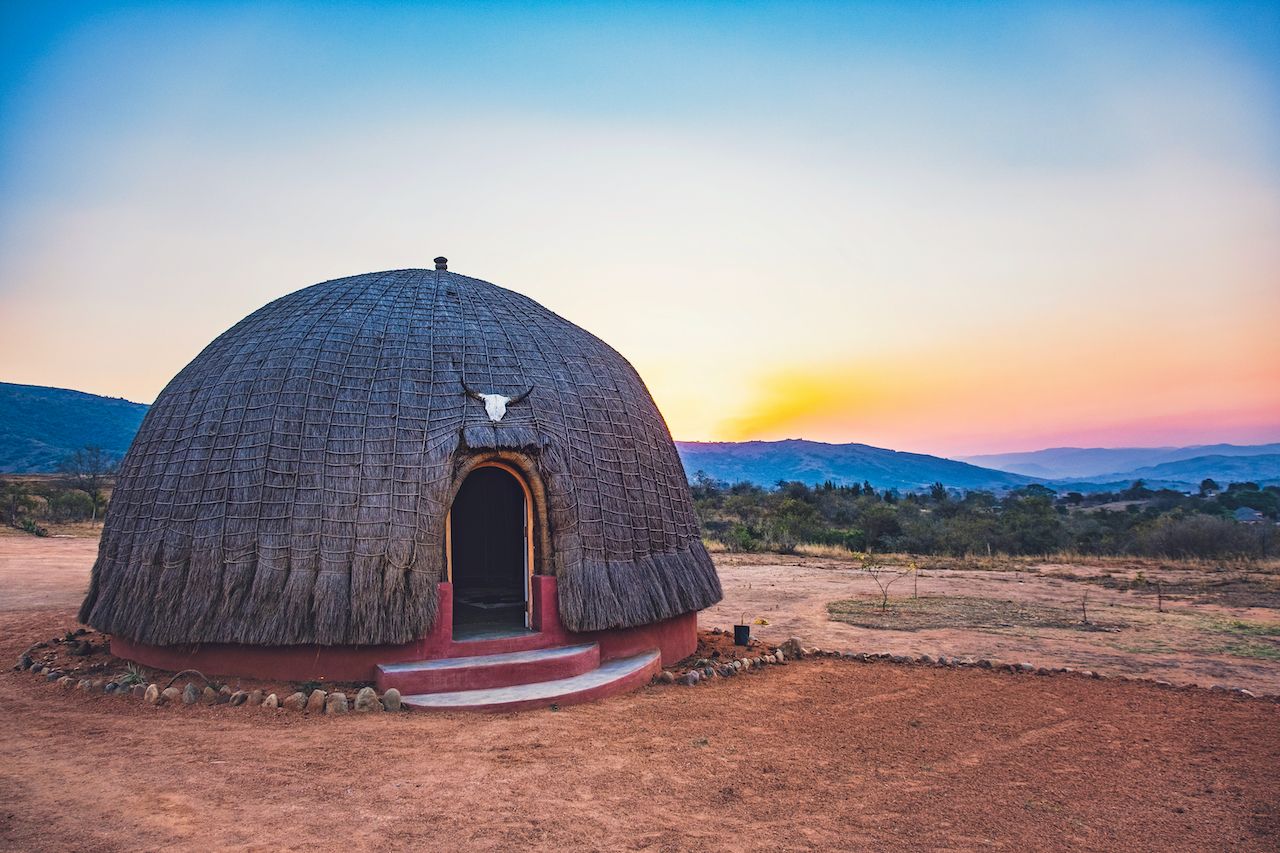
Photo: Daniel Andis/Shutterstock
Eswatini’s vernacular architecture is defined by tightly woven grass coverings that are fitted on top of domed skeletons constructed out of thin saplings. They’re adapted to the nation’s hot climate by self-heating and cooling, depending on the season, as well as protecting against rain. Historically, the number of huts owned by a family was indicative of socioeconomic status. Though Swazi beehive huts are in jeopardy of going extinct, models of Eswatini’s traditional architecture can be found at the Mlilwane Wildlife Sanctuary in Lobamba.
19. Lideta Mercato — Ethiopia
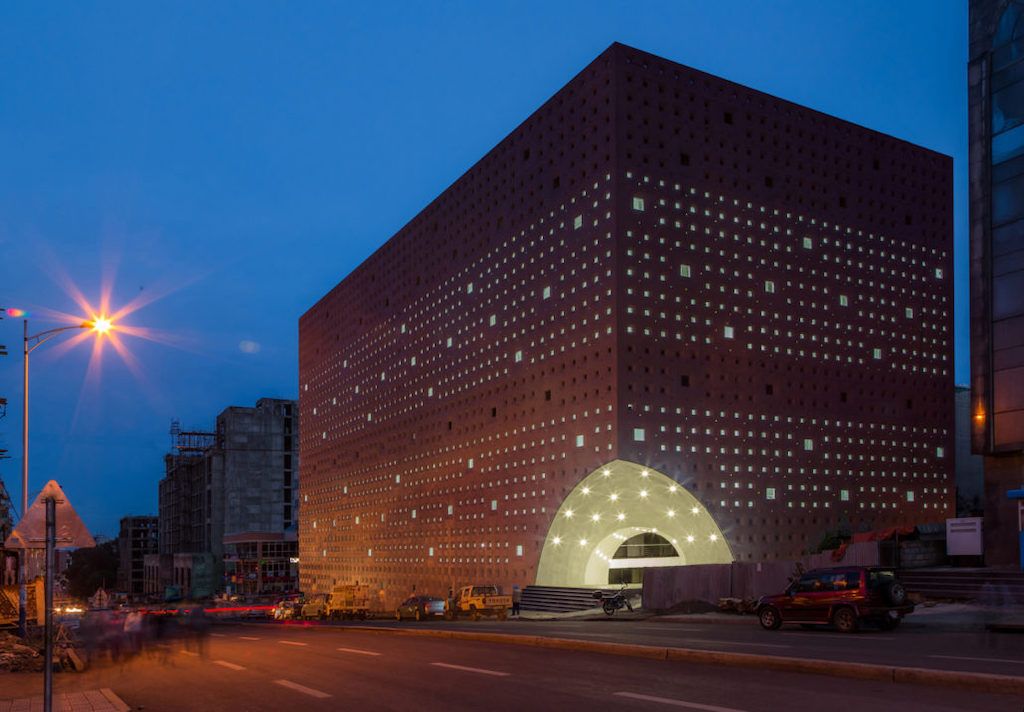
Photo: Vilata Studio/Shutterstock
Addis Ababa’s Lideta Mercato was named the world’s best shopping center by the UNESCO Prix Versailles architecture and design awards upon its completion in 2017. The vision of architect Xavier Vilalta, it’s both sustainable and celebratory of Ethiopian culture and aesthetics. Inspired by the Old Mercato, the traditional open-air shopping center that once occupied the plot where it now stands, Lideta Mercato has a striking perforated outer wall that’s reminiscent of the fractal patterns found in Ethiopian textiles. This unique design also helps protect the structure against the harsh local climate by regulating natural light and ventilation. Moreover, the mall incorporates photovoltaic umbrellas to provide shade and create renewable energy, and rainwater is collected from the roof, filtered, and repurposed for use in the building’s plumbing.
20. Ministry of Petroleum and Hydrocarbons — Gabon
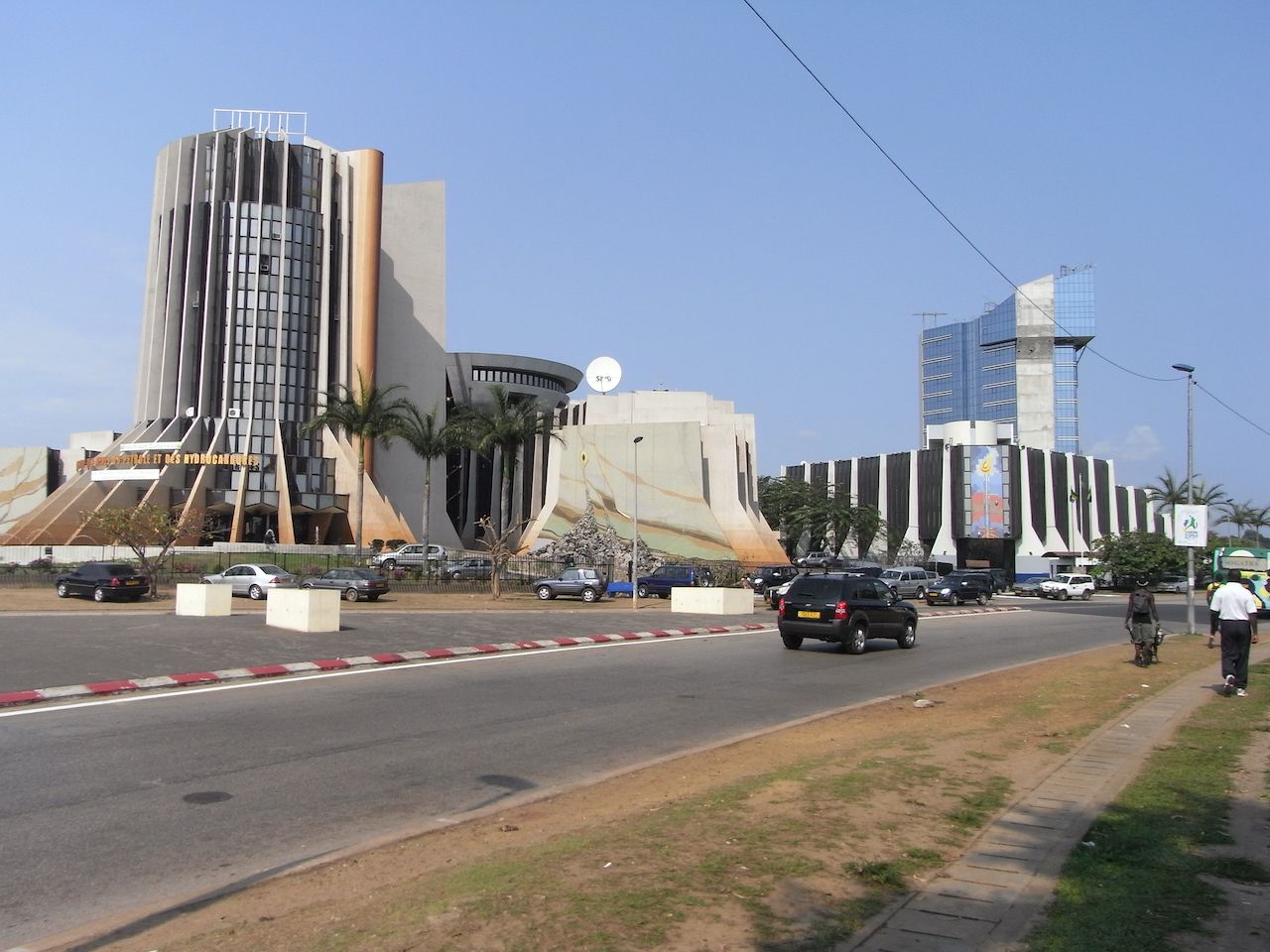
Photo: StreetVJ/Shutterstock
Government buildings in Gabon’s capital, Libreville, comprise some of the city’s most interesting modern architecture. The Ministry of Petroleum and Hydrocarbons doubles as a landmark with its stark concrete facade, which evokes the Brutalist style and resembles the base of a rocket ship lifting off. Also of note is the Ministry of Forestry and Environment, a colorful, abstract structure adorned with murals celebrating both the Gabonese culture and landscape.
21. Gambia National Assembly — The Gambia
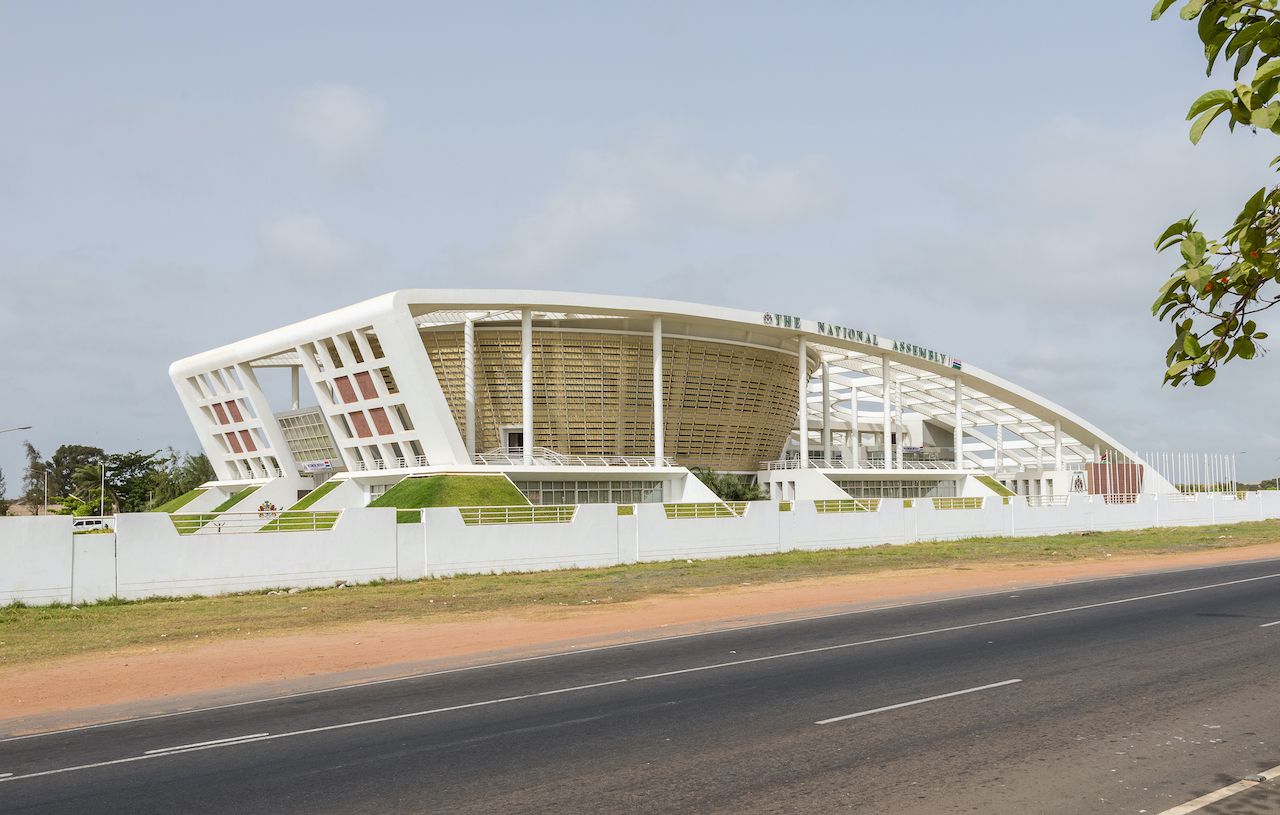
Photo: Salvador Aznar/Shutterstock
Ground broke on The Gambia’s renovated National Assembly building in 2011, and it was officially inaugurated in 2014. It was a large and expensive project that cost upward of $25 million to complete. As the nation’s sole legislative chamber, it’s fitting that the parliament building is monumental, with its crisp, cage-like roof sloping overhead a solid core that resembles a straw basket. Altogether, the complex’s main chamber can house 400 guests.
22. One Airport Square — Ghana
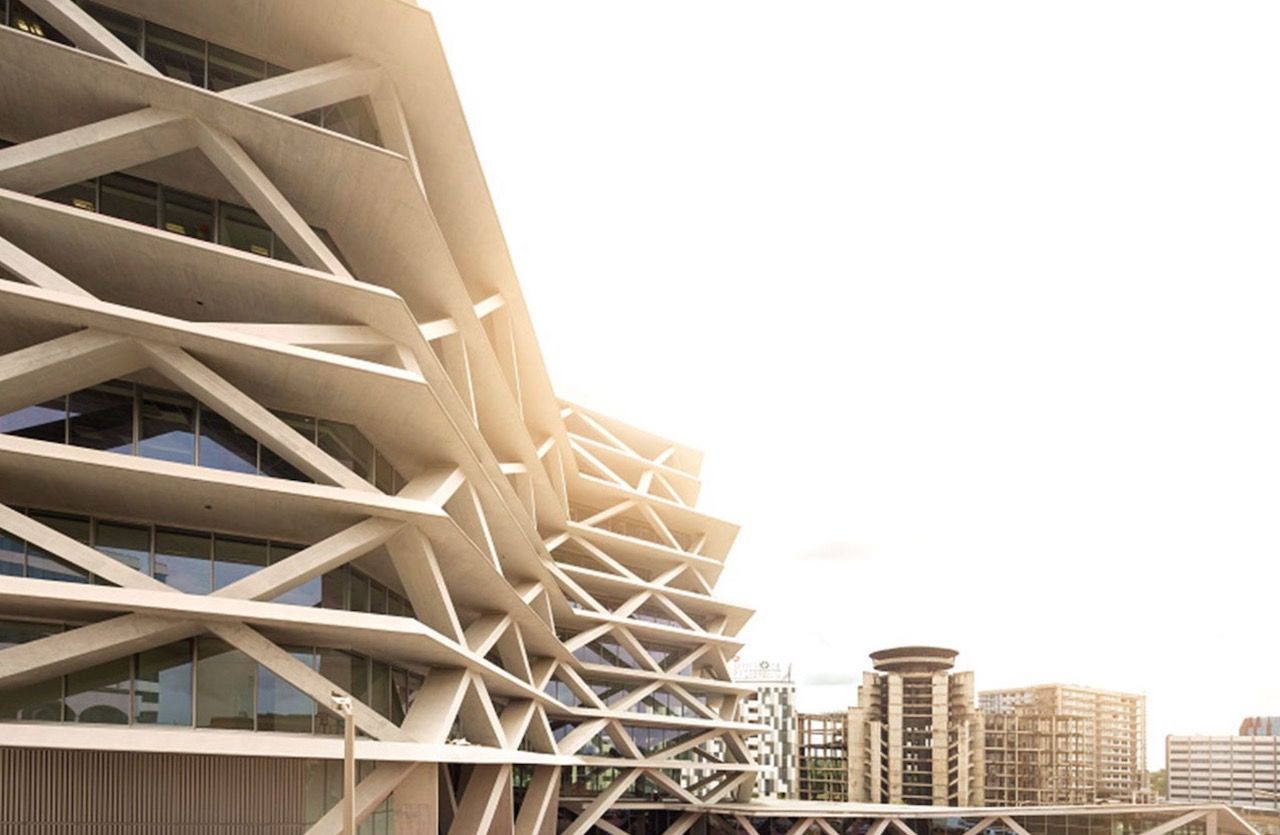
Photo: Mario Cucinella Architects
Though One Airport Square in Ghana’s capital, Accra, houses offices and other commercial activity, its thoughtful architecture is befitting a cultural landmark. The honeycomb-esque exterior was inspired by the bark of native palm trees and is reminiscent of a print one might see on Ghanian kente cloth. Sustainability was a major consideration during the design stage, as well. The structure allows for natural light and ventilation, employs solar shadings, and harvests rainwater with the aim of reducing energy use by 30-40 percent of the local standard. It was awarded a four-star rating by the Green Building Council of South Africa.
23. Casa à Palabres — Guinea
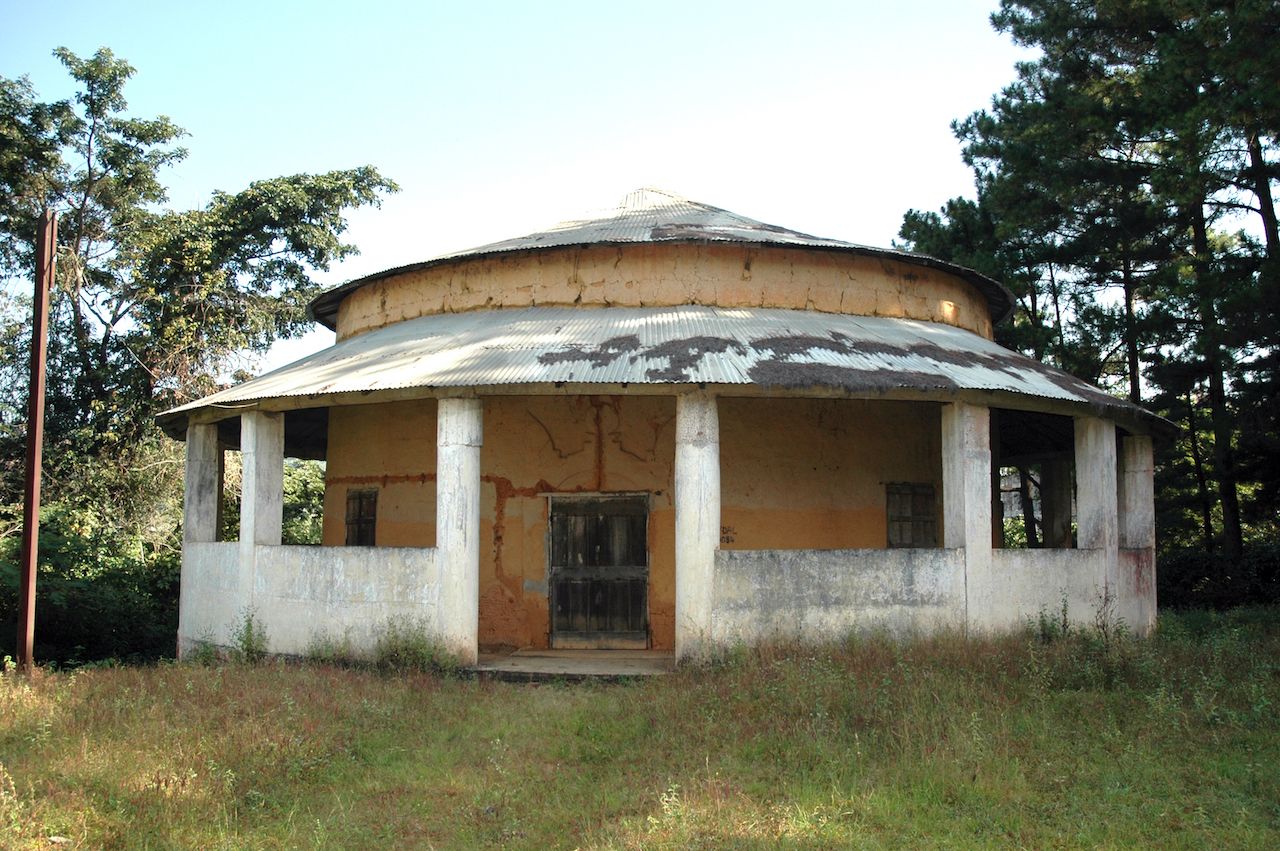
Photo: trevor kittelty/Shutterstock
Casa à Palabres, which translates to “house of words,” was established as a meeting place in Dalaba, Guinea, a traditional territory of the Fula people of West Africa. It originally served as a hall for village elders to deliberate over important decisions. Though modest from the outside, the interior is covered in bas-relief designs, with intricate motifs carved into the walls and floor.
24. Palace of the People — Guinea-Bissau
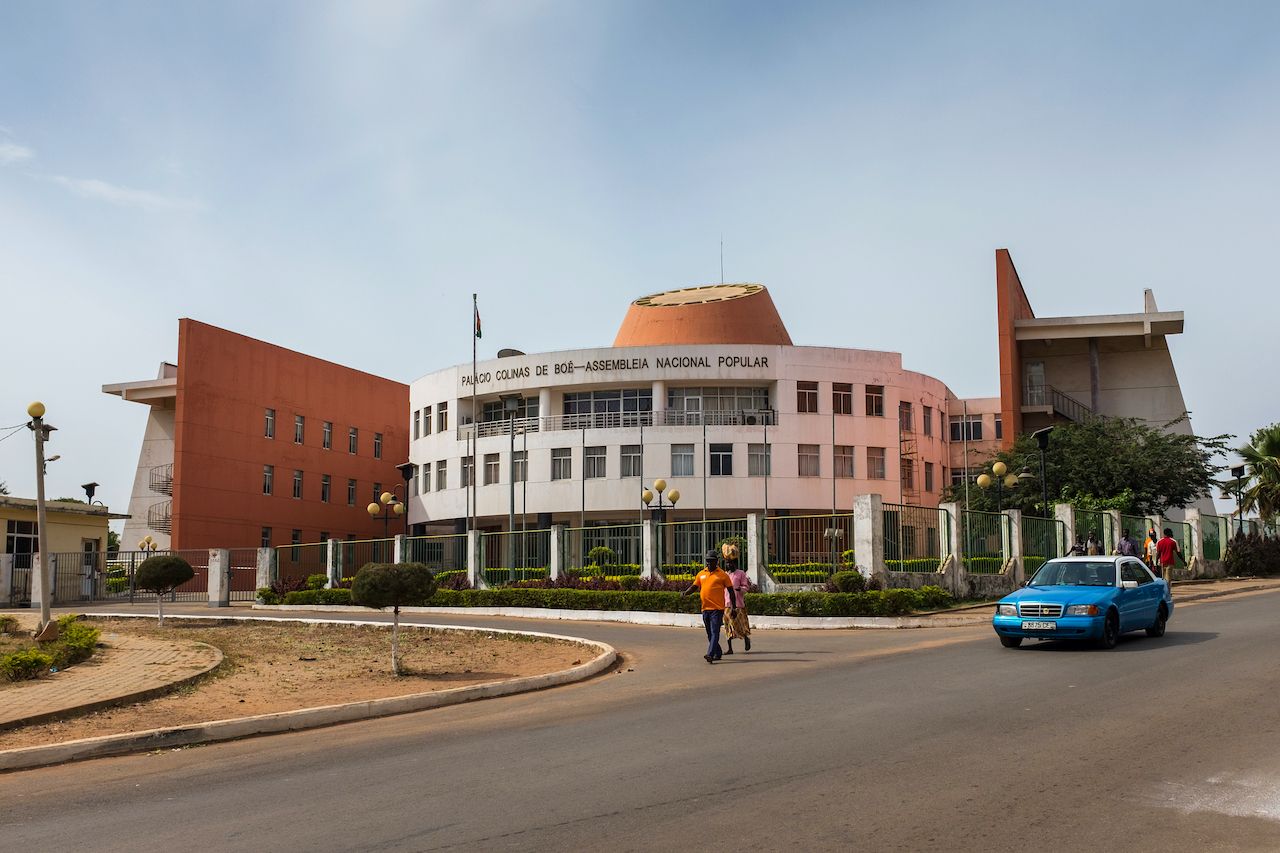
Photo: Peek Creative Collective/Shutterstock
Guinea-Bissau’s National People’s Assembly comprises 102 seats. Its representatives gather in the Palace of the People parliament building in Bissau, the nation’s capital. The assembly hall is located atop the central structure in an addition that resembles a small, wide-mouthed volcano. One either side, the building’s wings are dedicated to administrative offices. A fine example of Guinea-Bissau’s modern architecture, the Palace of the People was built in 2004.
25. African Heritage House — Kenya
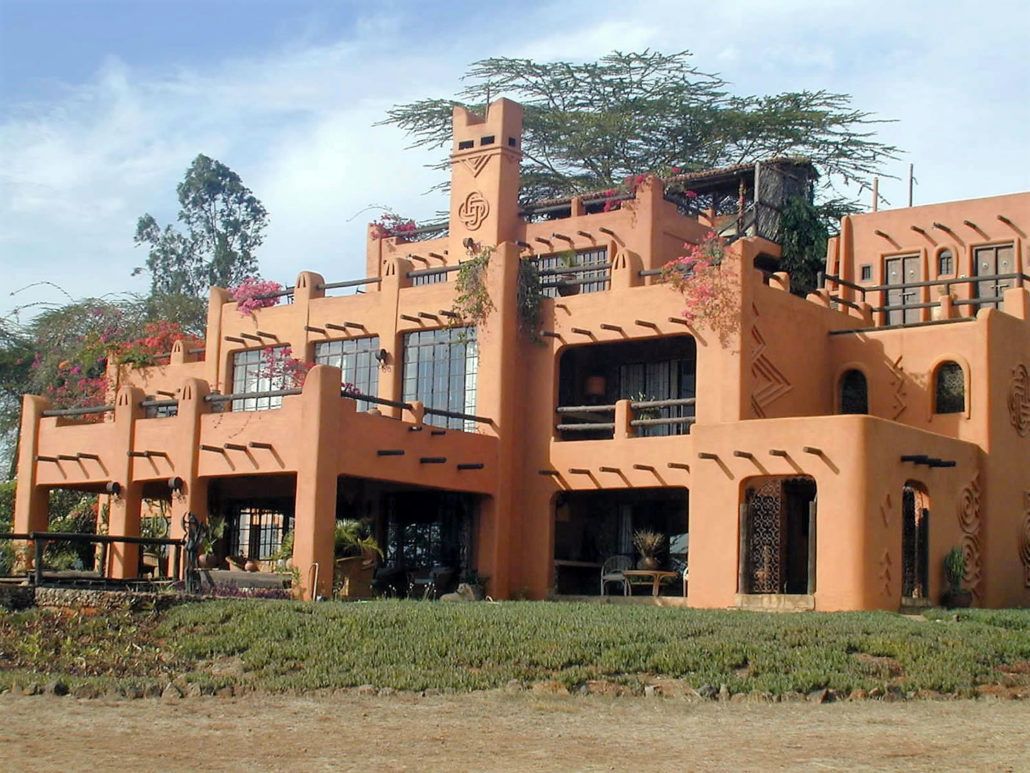
Photo: African Heritage House/Facebook
Overlooking Nairobi National Park, the African Heritage House cultural center was founded by former Kenyan vice president Joseph Murumbi and one-time US State Department employee Alan Donovan, who designed the structure in the image of Mali’s Great Mosque of Djenné and other African mud architecture. The heritage house is dedicated to celebrating pan-African art and culture. Inside, it displays decor from across the continent: Kuba cloth from Central Africa, Fulani blankets from West Africa, Lamu furniture from East Africa, and more. Works by artists like Ugandan sculptor Francis Nnaggenda can also be found around the property.
26. The Mokorotlo — Lesotho
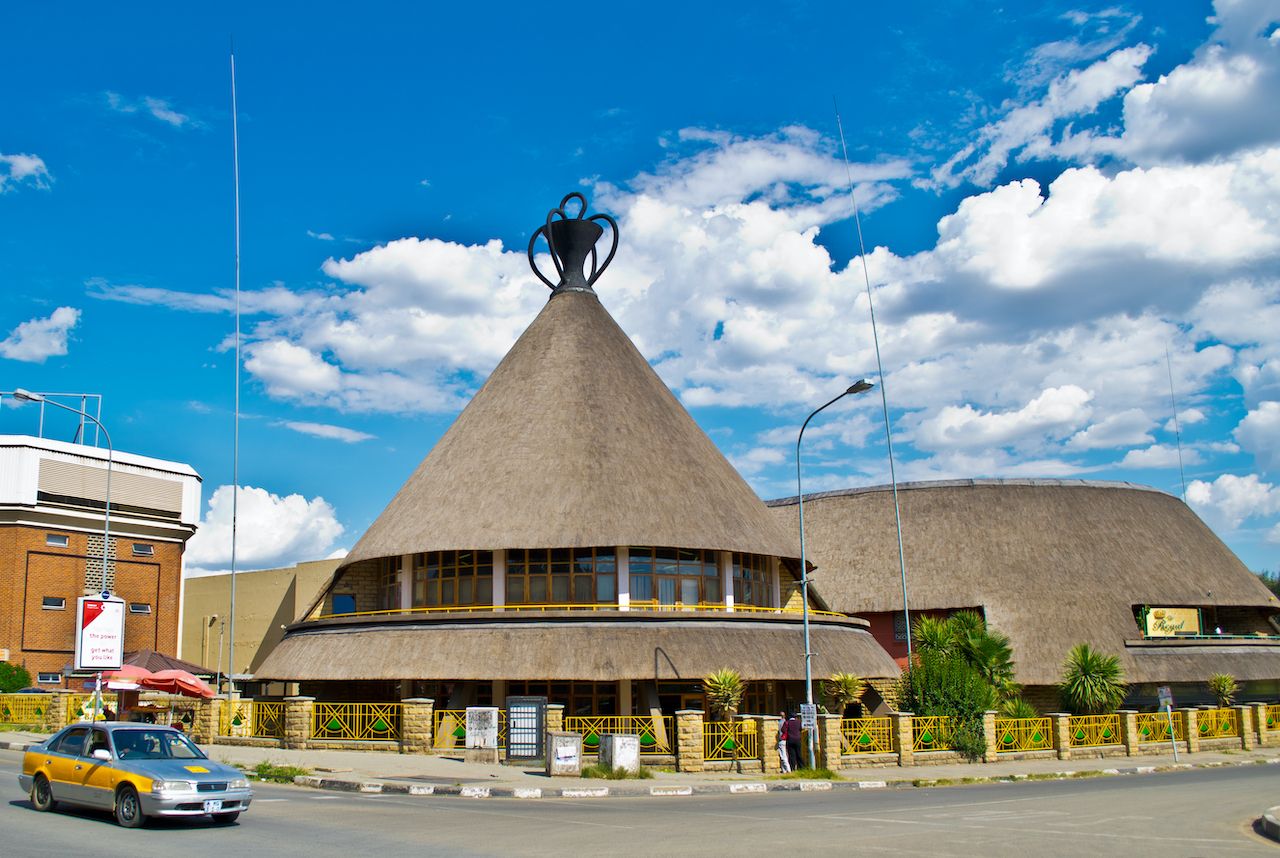
Photo: UnsulliedBokeh/Shutterstock
Among the most iconic buildings in Lesotho is the Mokorotlo hut in its capital city, Maseru. It was designed to resemble a mokorotlo, a hat woven from native mosea grass that’s ubiquitous in Sotho culture. The accessory has become a symbol not only of the predominant Bantu ethnic group but of Lesotho at large, appearing both on the national flag and Lesotho license plates. Mokorotlo hats may also be displayed inside Sotho homes. A local landmark and attraction, the Mokorotlo hut also houses a museum with insight into Sotho culture and life in Lesotho.
27. Grand Masonic Lodge — Liberia
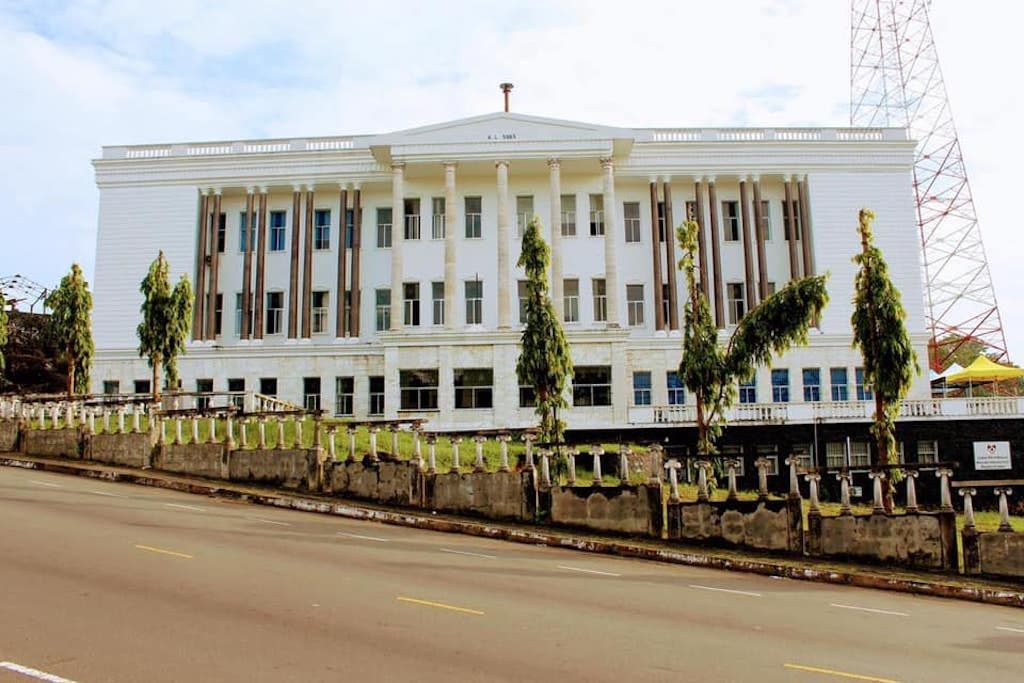
Photo: Grand Lodge of Liberia/Facebook
Freemasonry refers to a brotherhood that was founded by medieval stonemasons. Chapters exist around the world to this day, with many members of the Masonic Order of Liberia gathering in this grand lodge in Monrovia, the nation’s capital. Though it fell into disarray for a number of years, the building was renovated in 2018 and is now in use once again.
28. Leptis Magna — Libya
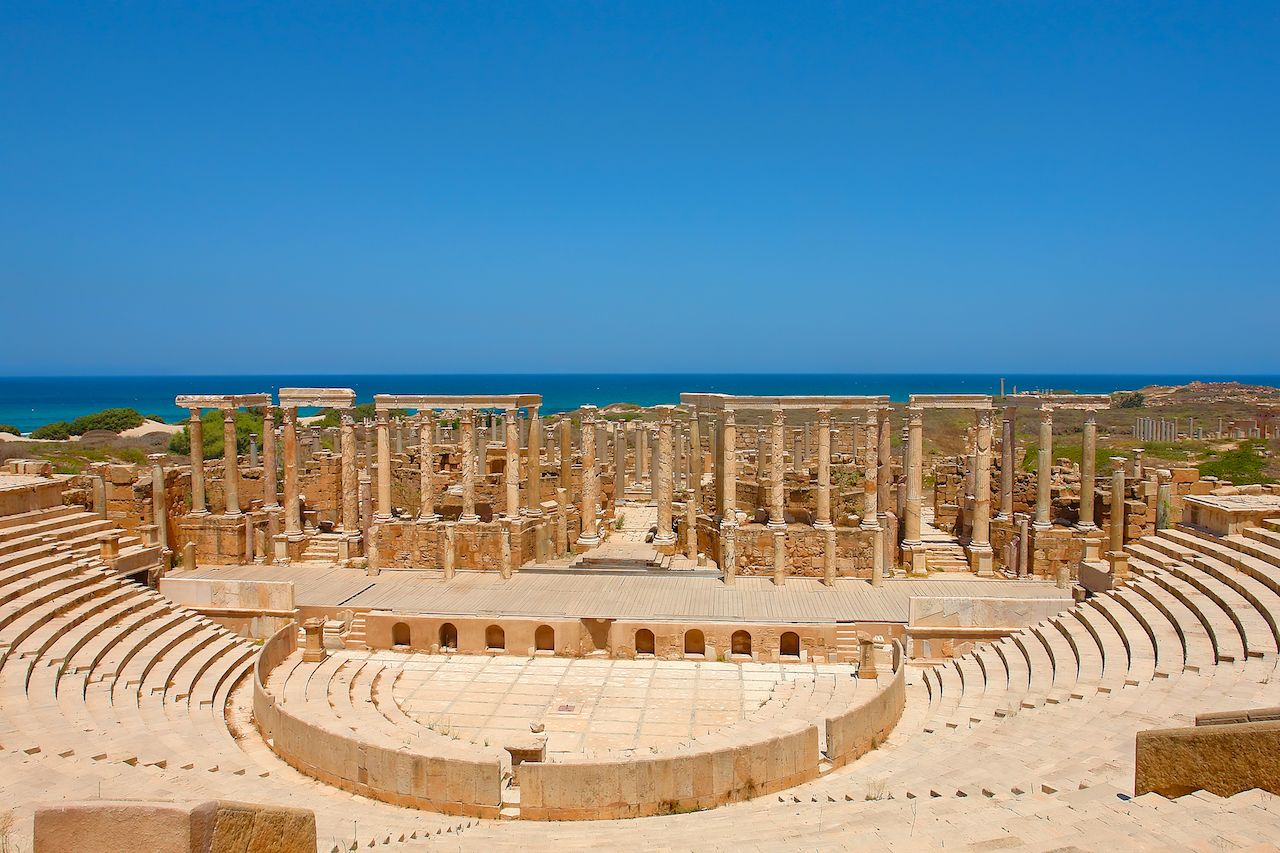
Photo: lapas77/Shutterstock
Gazing out at the Mediterranean Sea from its vantage point on Libya’s coastline is Leptis Magna, once a majestic city under the Roman Empire that was largely developed by emperor Septimius Severus. The entire site was awarded a UNESCO inscription in 1982 in an effort to recognize and preserve the ruins of the ancient city, which was added to the list of endangered World Heritage sites in 2016. Among the archaeological marvels found at Leptis Magna are the Arch of Septimius Severus, Severan Basilica, and sweeping amphitheater pictured above.
29. Rova of Antananarivo — Madagascar
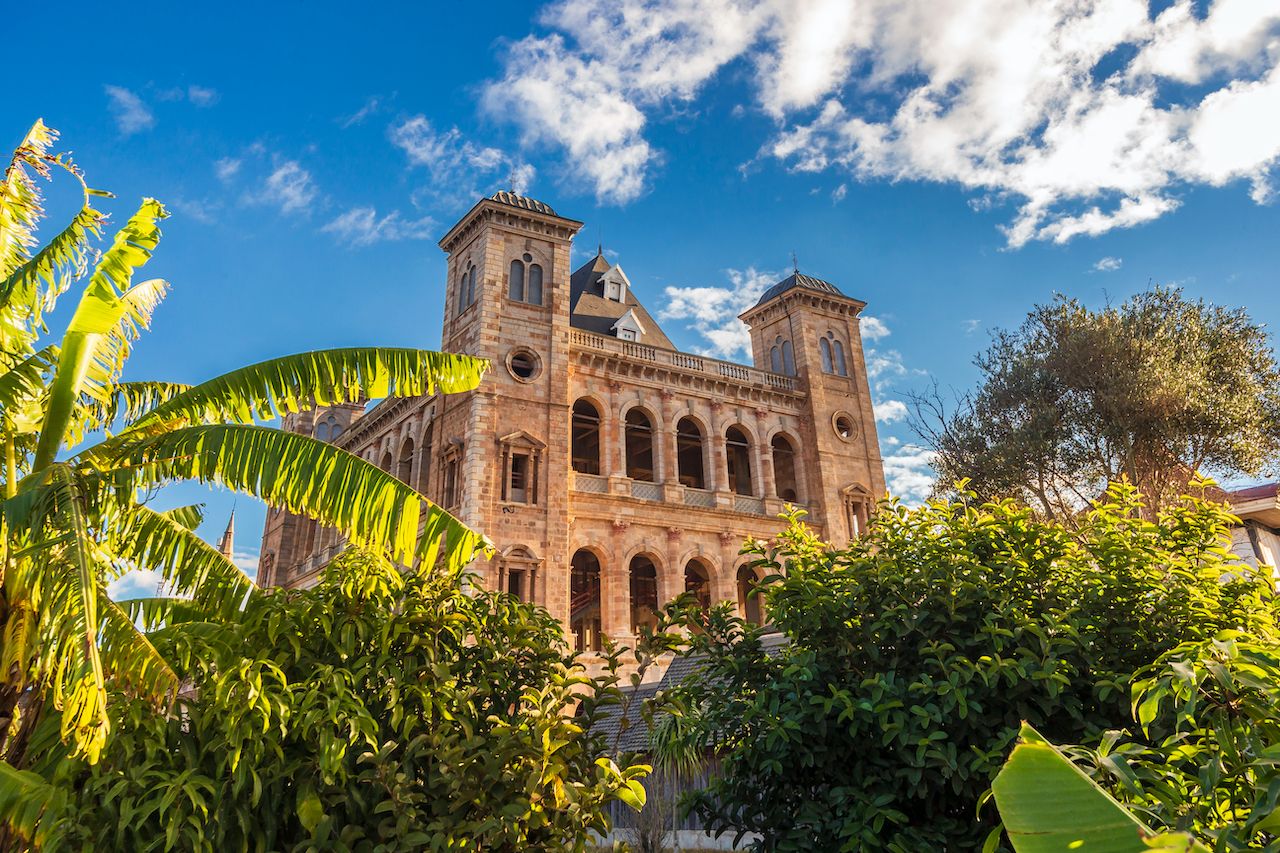
Photo: Chr. Offenberg/Shutterstock
Also known as Manjakamiadana, this fortified palace, or rova, found in Madagascar’s capital, Antananarivo, was built as a palace for Queen Ranavalona I who ruled from 1828 to 1861. Originally constructed from wood, the site was embellished with a stone facade in honor of Queen Ranavolona II in 1867. The great stone tombs found beside the rova’s gateway are a resting place for Madagascar’s distinguished royals. Beaming down on Antananarivo atop Analamanga Hill, the Queen’s Palace can be admired from anywhere in the capital city.
30. Mua Mission — Malawi
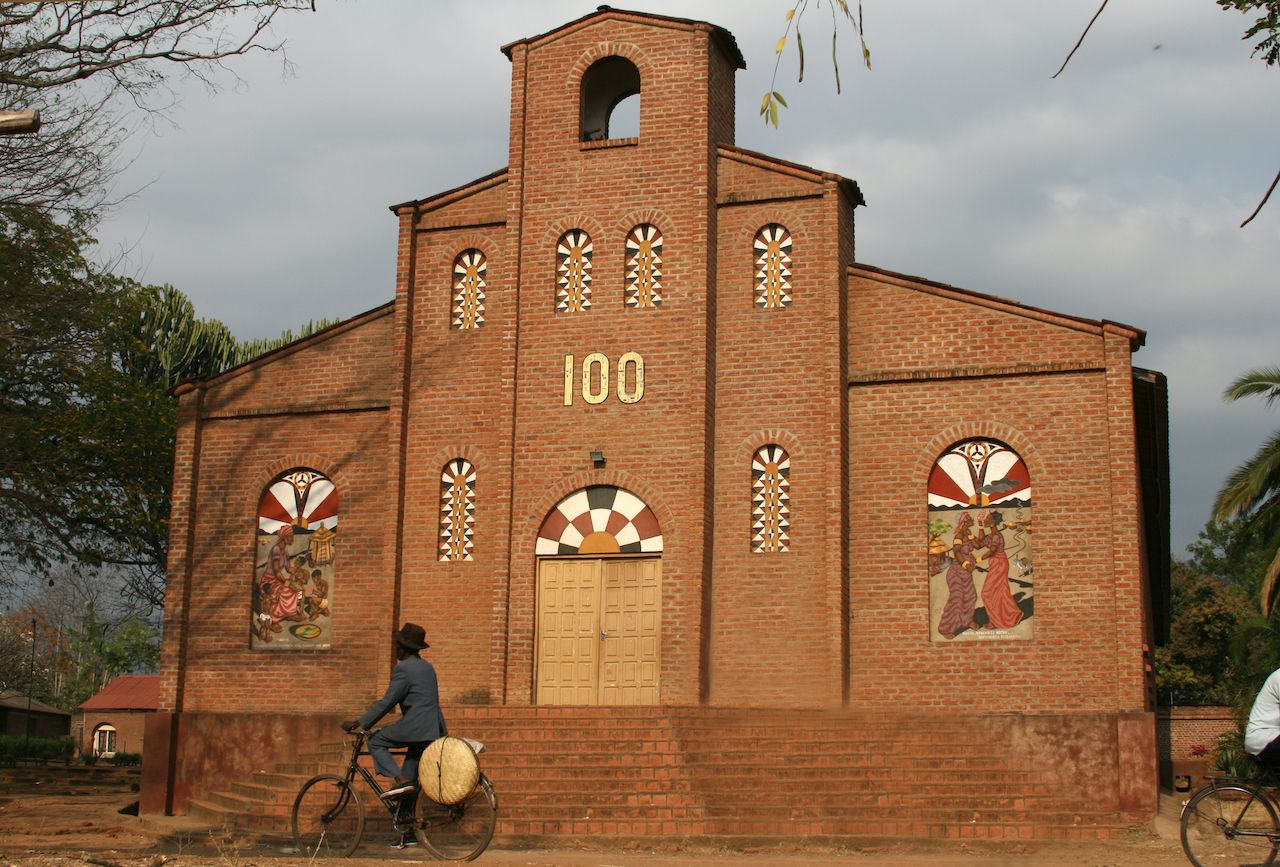
Photo: Dennis Albert Richardson/Shutterstock
This mission in Mua, Malawi, was founded in the first years of the 20th century by a group of missionaries known as the White Fathers. Since 1976, the site has hosted the Kungoni art and culture center, complete with a museum and library dedicated to preserving Chewa, Ngoni, and Yao heritage. Exquisite wood carvings are also produced at the Mua Mission, where aspiring carvers can study the craft and sell their goods at the on-site shop.
31. Great Mosque of Djenné — Mali

Photo: trevor kittelty/Shutterstock
Mali’s Great Mosque of Djenné may be the most impressive mud structure anywhere on Earth. It is the largest and a crowning achievement of West Africa’s earthen Sudano-Sahelian architecture, which is characterized by its use of mudbrick, adobe, and wooden beams that may stick out like spikes. Naturally, weather takes its toll on such structures. The current mosque in Djenné’s historic old town was most recently reconstructed in 1907, and once a year, during a festival known as Crépissage, the city’s residents get together to replaster their Great Mosque.
32. Stone Tower of Chinguetti — Mauritania
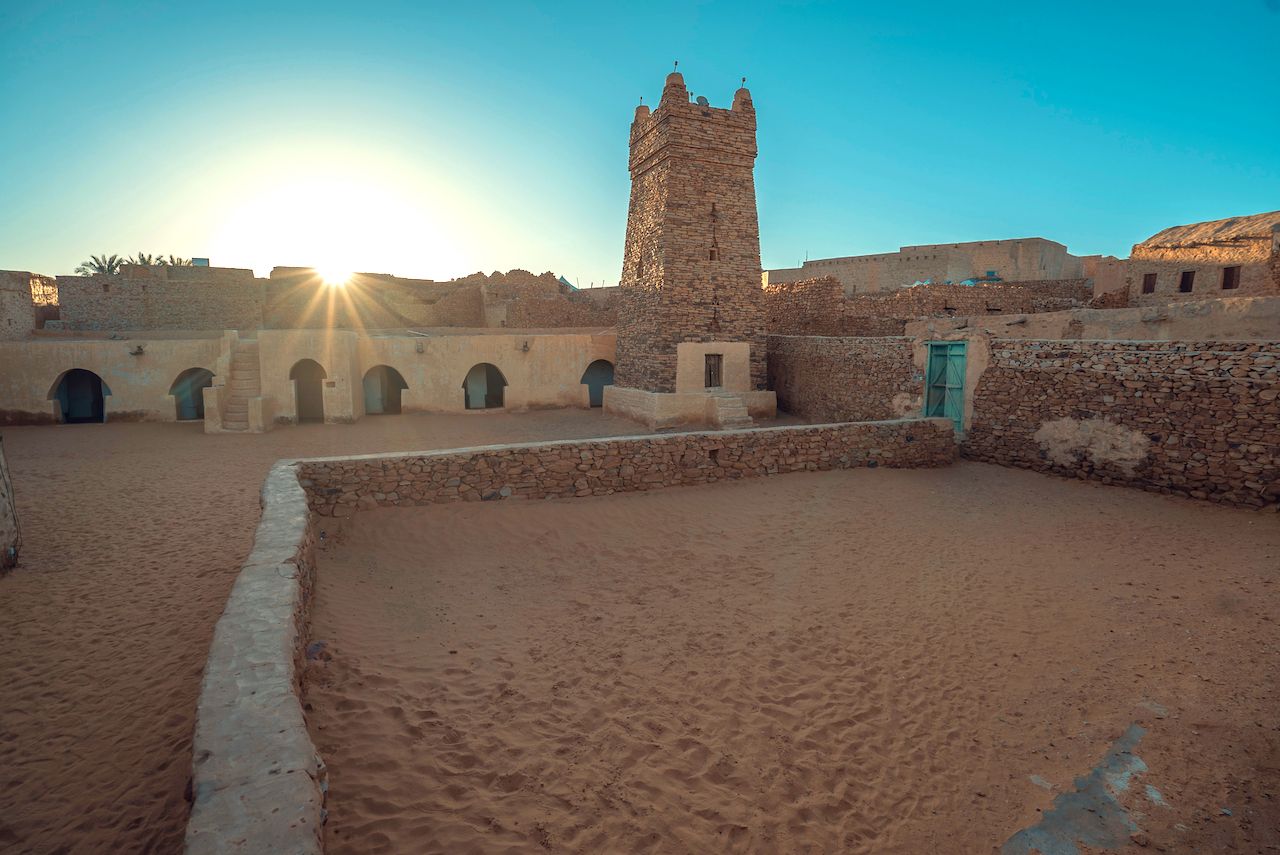
Photo: Stosun/Shutterstock
A group of four ksour was established in the Mauritanian Sahara between the 11th and 12th centuries. Initially founded to benefit trans-Saharan traders, the sandy cities grew into impressive settlements through the 16th century, with tightly packed houses lining slender lanes and community centers like mosques and open squares. Chinguetti, one of the collectively UNESCO-listed ksour, houses several well-maintained sites, including the 13th-century Great Friday Mosque and the tall tower pictured above.
33. Thien Thane Pagoda — Mauritius

Photo: Morris Mann/Shutterstock
Tucked away at the foothills of Signal Mountain in Port Louis is the Thien Thane Pagoda, a shrine to the Jade Emperor and place of worship for Mauritius’s Chinese Buddhist population. Built in 1950, it was among the first pagodas built on the island and was modeled after the Temple of Heaven in Beijing. Every year during the first month of the Chinese calendar, an elaborate festival honoring the Jade Emperor is held at the Thien Thane Pagoda.
34. Bab Mansour Laleuj — Morocco
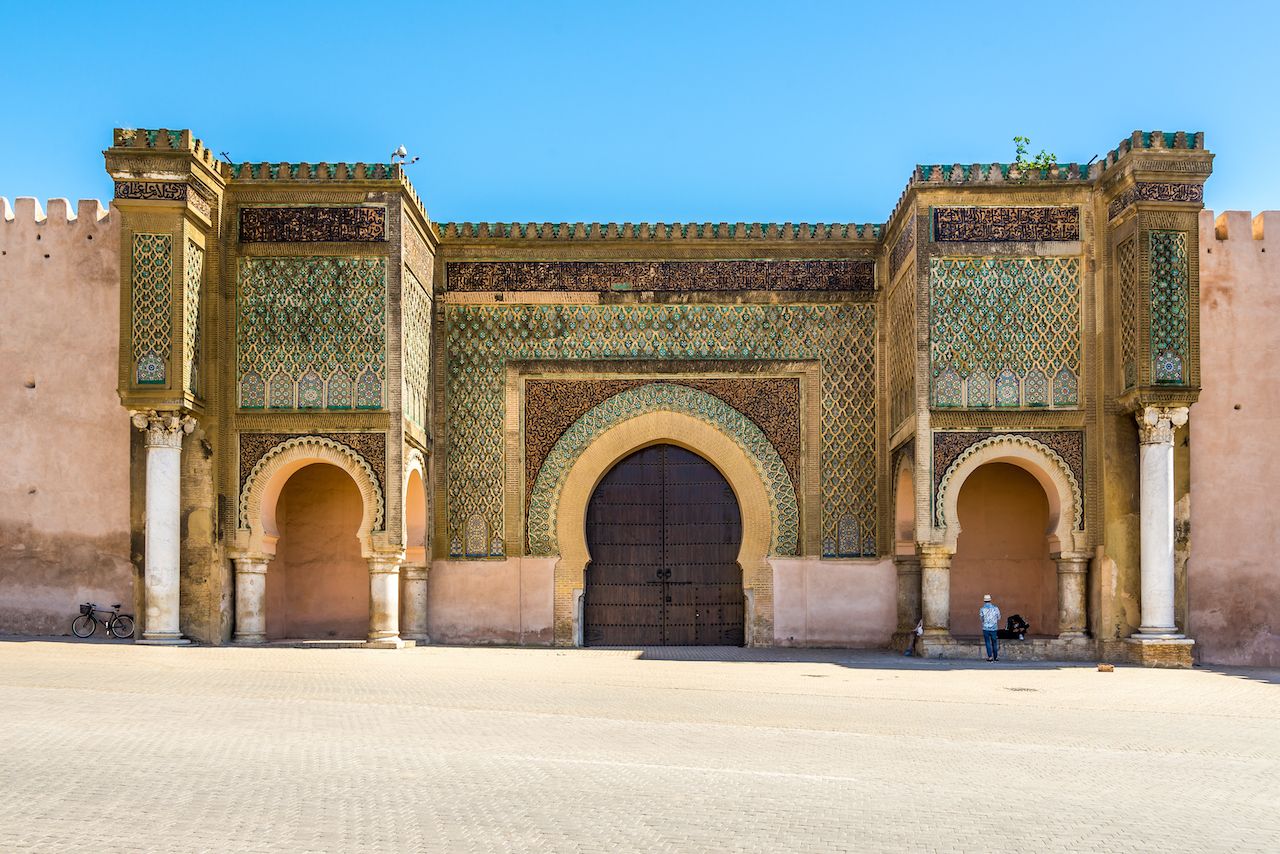
Photo: milosk50/Shutterstock
Architectural marvels are one of Morocco’s trademarks, from Casablanca’s Moorish Hassan II Mosque to Marrakesh’s Islamic El Bahia Palace. This intricately tiled gateway in Meknes guards the entrance to Place El Hedim. Named for architect El-Mansour, this imposing structure has been standing since 1732. Its mesmerizing blue-green mosaics have been well-preserved, if in need of polishing, and the Arabic inscriptions scrawled across the top attest to the gate’s beauty. Though the wooden doors no longer open, visitors may access the guarded square through a smaller passageway and will find exhibitions regularly hosted at the site.
35. Church of Saint Anthony of Polana — Mozambique
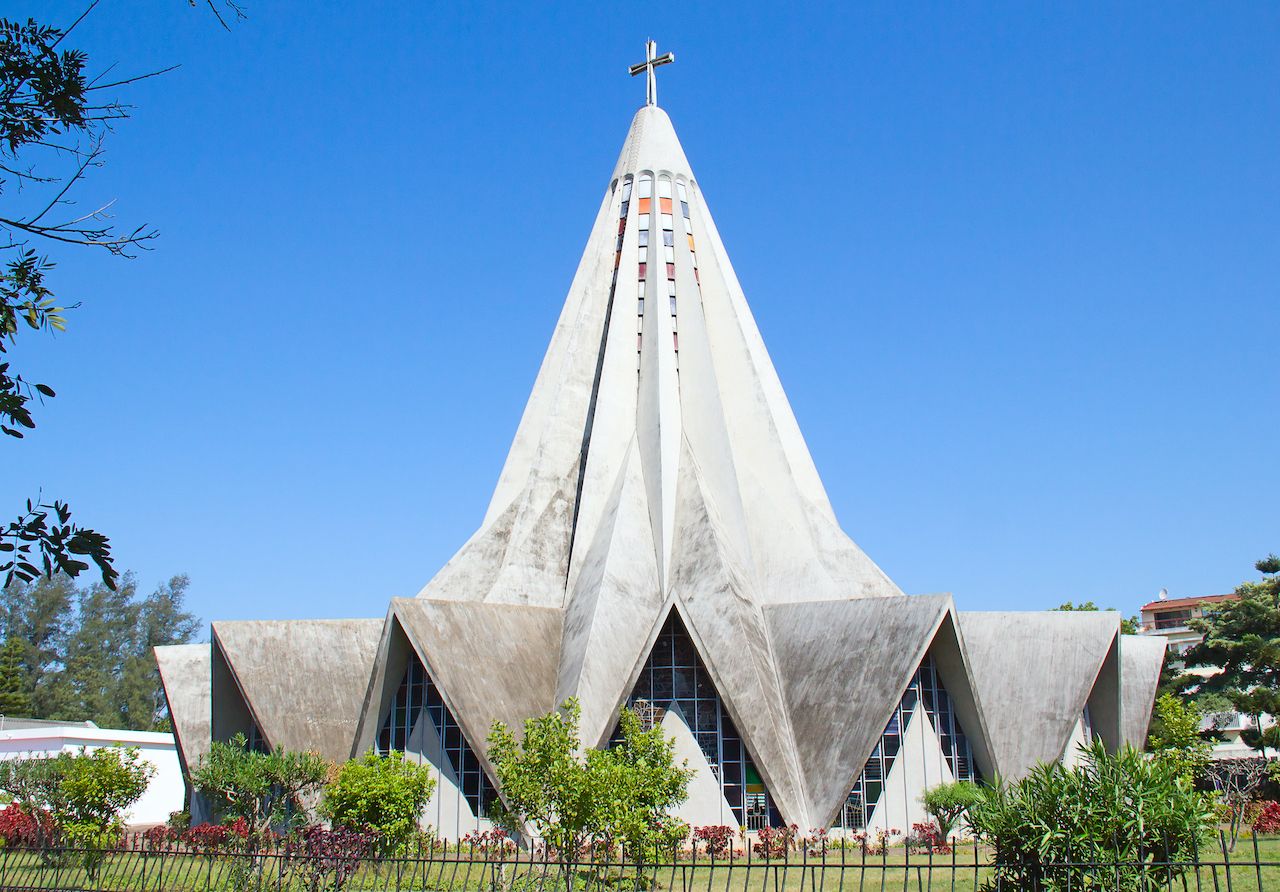
Photo: Fedor Selivanov/Shutterstock
This Franciscan church in Maputo, aptly nicknamed the “lemon squeezer,” features a modernist style designed by Portuguese architect Nuno Craveiro Lopes, who built several notable structures in Mozambique and Angola. Completed in 1962, the church has also been likened to the works of Félix Candela, a founder of Mexican architecture and structural engineering, and compared to German expressionist architecture. Inside is a dramatic vaulted ceiling with stained-glass panels running up the tower and around the perimeter.
36. Christuskirche — Namibia
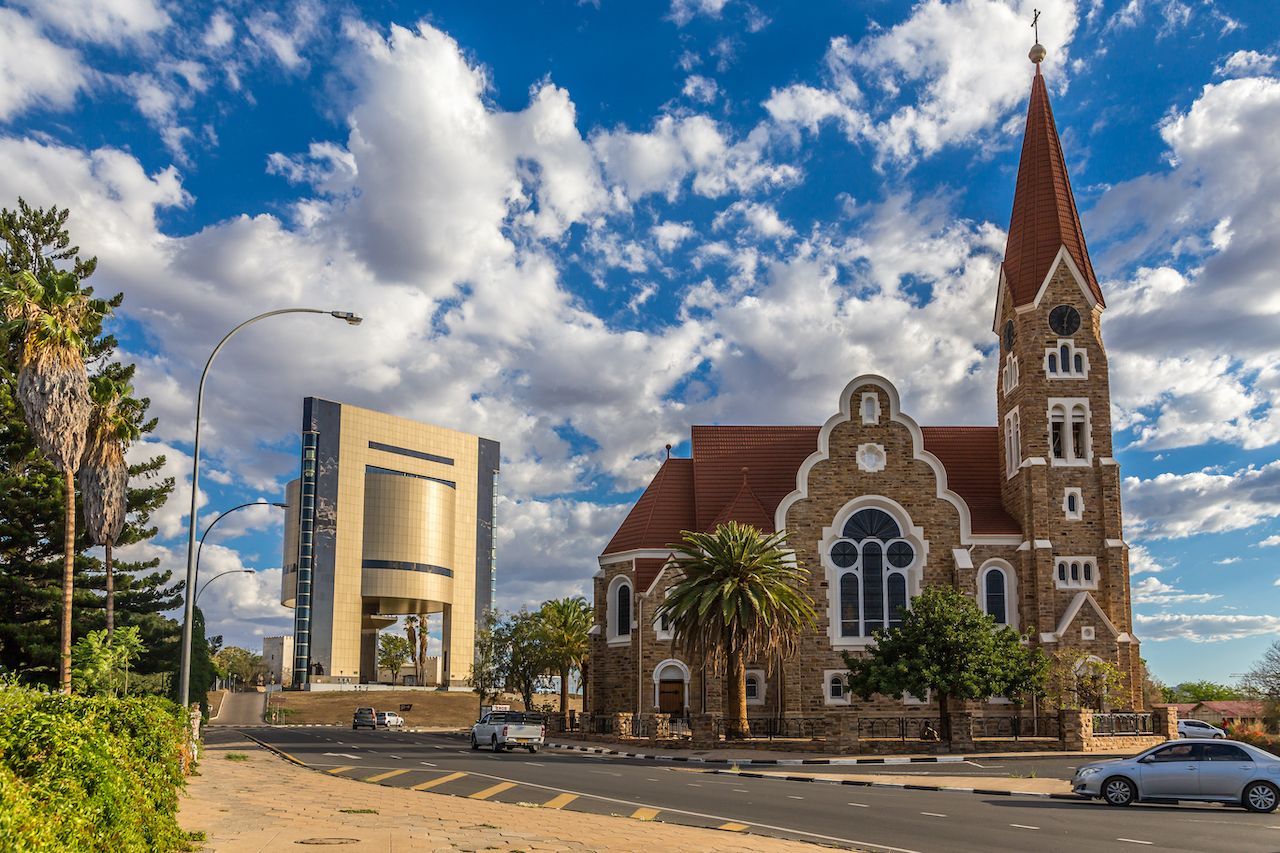
Photo: Vadim Nefedoff/Shutterstock
An architectural icon in Namibia’s capital, Windhoek, Christuskirche is a German Lutheran house of worship. Designed by architect Gottlieb Redecker, the storybook structure evokes a hybrid neo-Romanesque and Gothic revival framework blended with Art Nouveau stylings. Embellished with important Italian marble, it’s otherwise made of quartz sandstone sourced from a dam outside the city. You’ll find the church in the city center a stone’s throw from the Independence Memorial Museum, an architectural landmark in its own right, also pictured.
37. Hikma Religious and Secular Complex — Niger
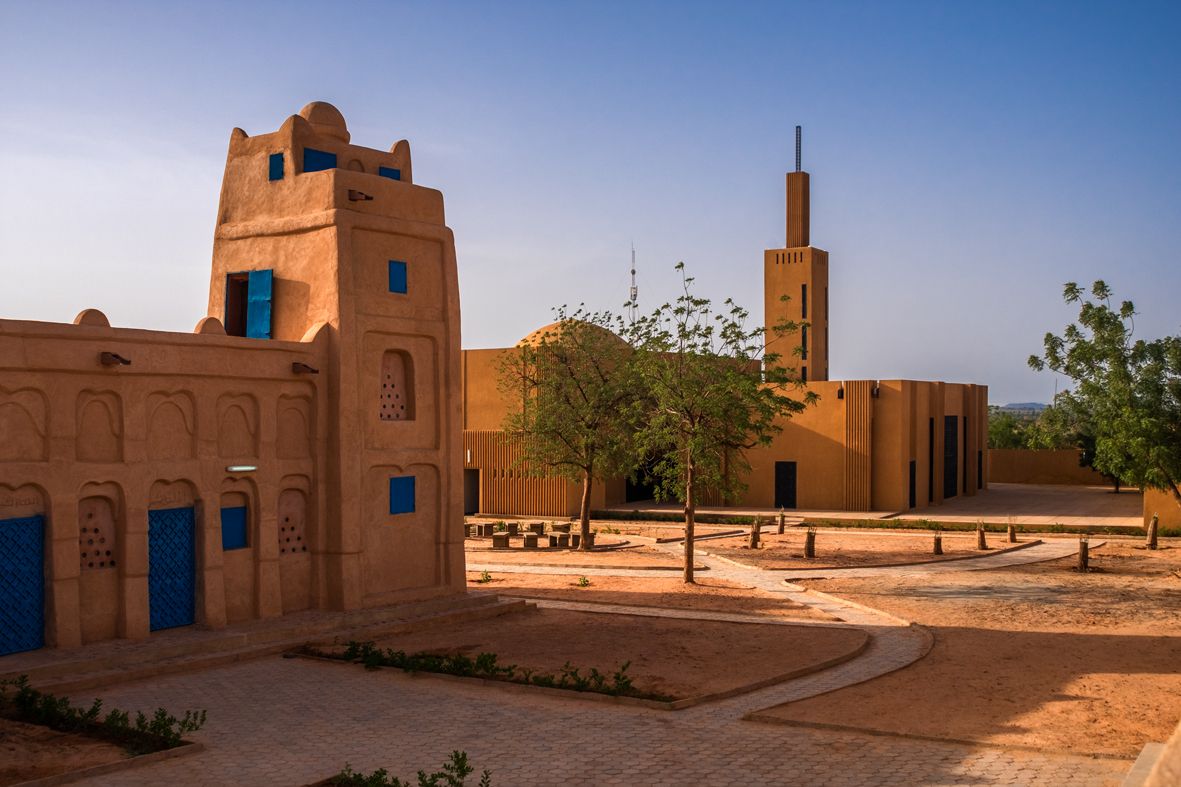
Photo: Atelier Masōmī
Nigerien architect Mariam Kamara, founder of Atelier Masōmī, has established herself as one of the most celebrated figures in contemporary African architecture. This project saw a disused mosque in Dandaji transformed into a complex that’s welcoming to all, complete with both a renovated mosque and a new library to promote literacy within the community. Nearly all of the materials used during construction were sourced locally, and the compressed earth bricks used in favor of traditional adobe increase sustainability by regulating heat and curbing maintenance.
38. National Theatre — Nigeria
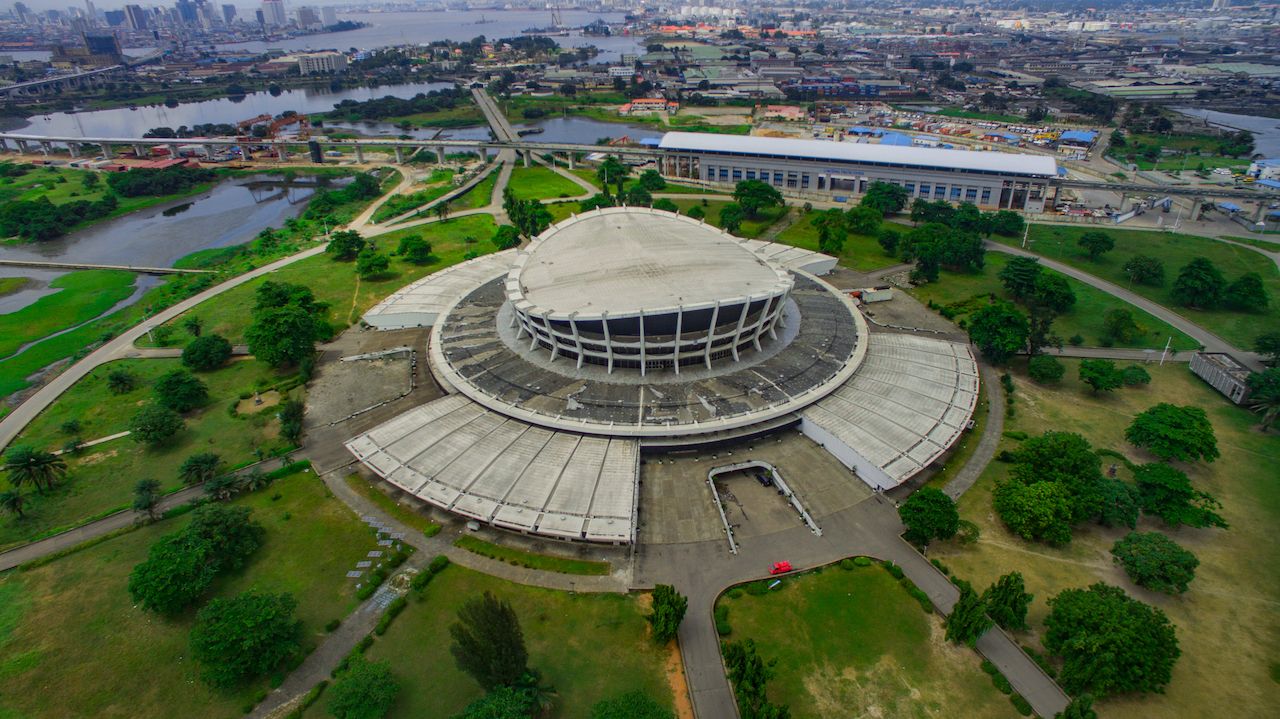
Photo: bolarzeal/Shutterstock
Nigeria’s main performing arts establishment, the national theater in Lagos was originally constructed for the 1977 Festival of Arts and Culture. It was designed to resemble a Nigerian military beret, roughly 100 feet at its tallest point. The building also mimics the architecture of the Palace of Culture and Sports in Varna, Bulgaria, as it was built by a Bulgarian firm.
39. Nabemba Tower — Republic of the Congo
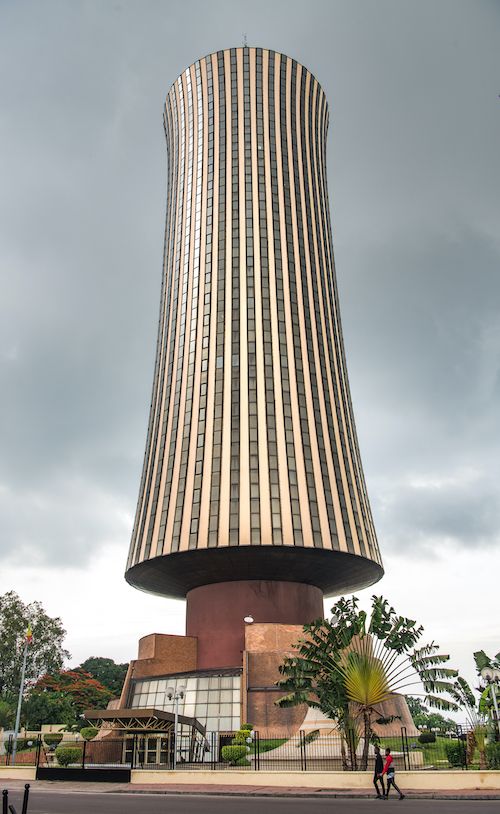
Photo: mbrand85/Shutterstock
The tallest structure in the Republic of the Congo, Brazzaville’s Nabemba Tower stares down at the Congo River from nearly 350 feet up. Appropriately, it takes its name from the nation’s tallest peak, Mount Nabemba. Construction ended on the 30-floor office building in 1986 when the socialist government had big plans to invest in Brazzaville’s development. It was rebuilt a decade later after being damaged during the country’s civil war. Though a point of Congolese pride today, the tower is also the target of criticism due to its high upkeep costs, which have been cited as surpassing $3.5 million dollars annually.
40. King’s Palace — Rwanda
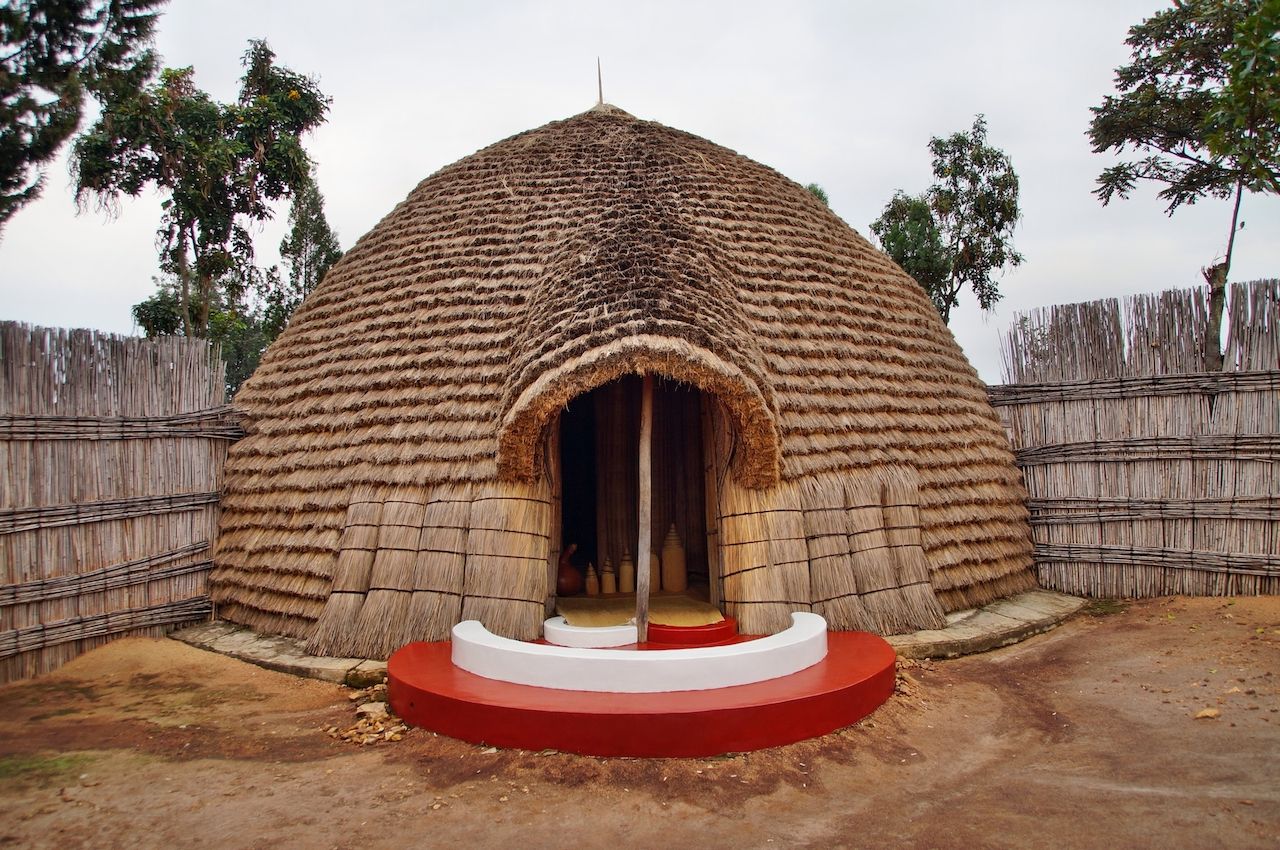
Photo: Przemyslaw Skibinski/Shutterstock
One of Rwanda’s great cultural landmarks, the King’s Palace in Nyanza is a recreation of an ancient royal residence from the days when Nyanza was the unofficial capital of the kingdom. At its height, the town was home to as many as 2,000 Rwandans who lived in villages made up of huts bearing a similar beehive design. Also found on site are Inyambo cattle, said to be descendants of the herd kept by the king himself, which were traditionally dressed in jewelry and trained to participate in ceremonies praising the monarch.
41. Roça Agua Izé — Sao Tome and Principe

Photo: alfotokunst/Shutterstock
Two crops underpinned Sao Tome and Principe’s grand entrance onto the agricultural stage in the 1800s: cocoa and coffee. Cocoa, in particular, thrived, making the former Portuguese colony one of the largest producers in the world after the turn of the 20th century. Five major cocoa plantations were built during the agricultural boom, among them Roça Agua Izé. Entire villages were built around these rocas, with not only warehouses and production centers but also community buildings, hospitals, and housing for the countless Sao Tomeans involved in the industry. Cocoa production ceased after the island nation gained its independence in 1975, allowing the rocas to fall into disuse, though remnants of the surrounding villages remain.
42. Great Mosque of Touba — Senegal

Photo: Homo Cosmicos/Shutterstock
Established by Amadou Bamba, the founder of Senegal’s Sufi Mouride Brotherhood, in the late 19th century, the Great Mosque of Touba is one of the largest and most striking mosques on the African continent. It doubles as a mausoleum for Bamba and his caliph sons. Members of the Mouride Brotherhood journey to the site, with its 280-plus-foot main minaret, each year as part of a pilgrimage known as the Grand Magal of Touba.
43. Arul Mihu Navasakthi Vinayagar Temple — Seychelles
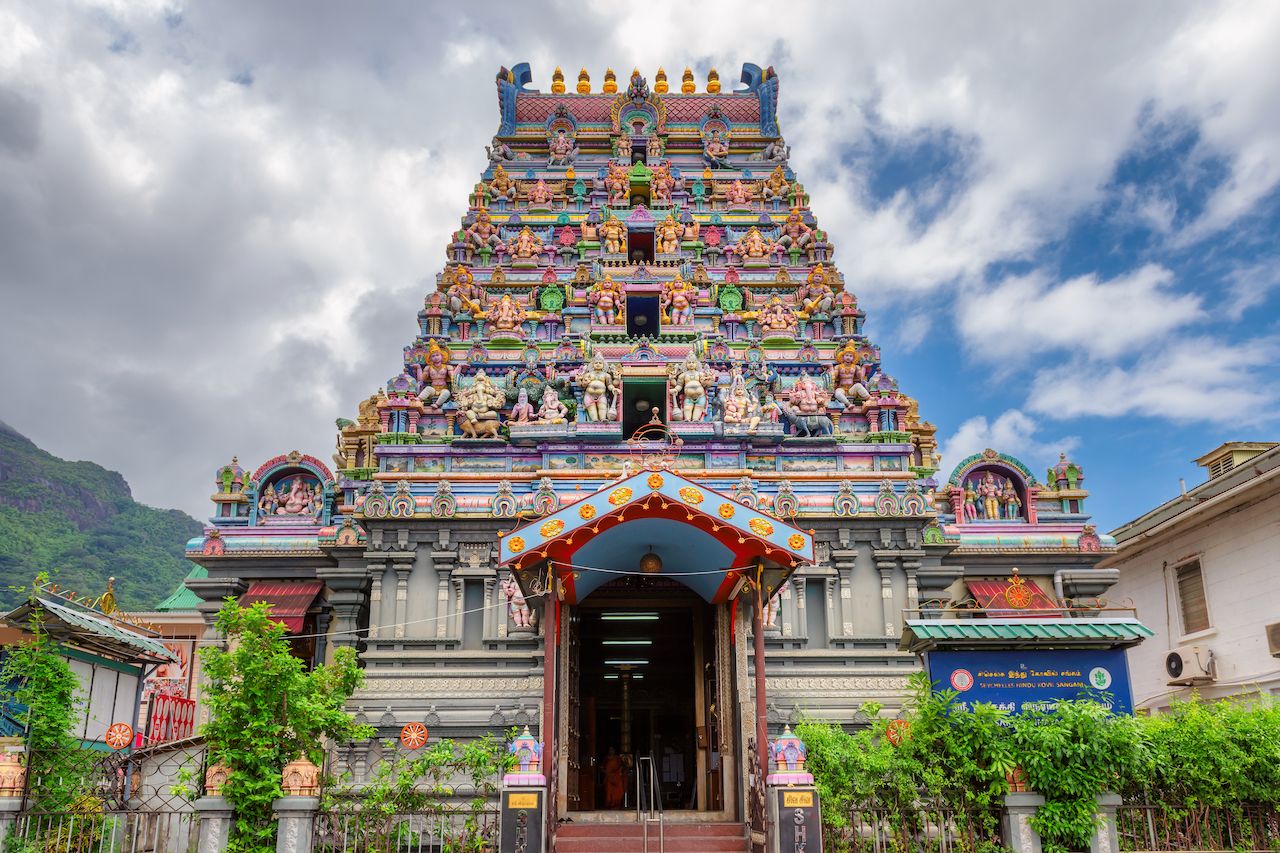
Photo: Lucky-photographer/Shutterstock
Though the majority of Seychellois identify as Roman Catholic, or practice another Christian faith, Hinduism is relatively common on the island. Nonetheless, Arul Mihu Navasakthi Vinayagar Temple is the only Hindu temple in the Seychelles, as well as a defining landmark of the island’s capital, Victoria. It was built in 1992 in honor of the deity Ganesha and bears a striking resemblance to the flashy temples found in southern India, with countless carvings depicting Hindu figures decorating its ornate and resplendent tower.
44. Martello Tower — Sierra Leone
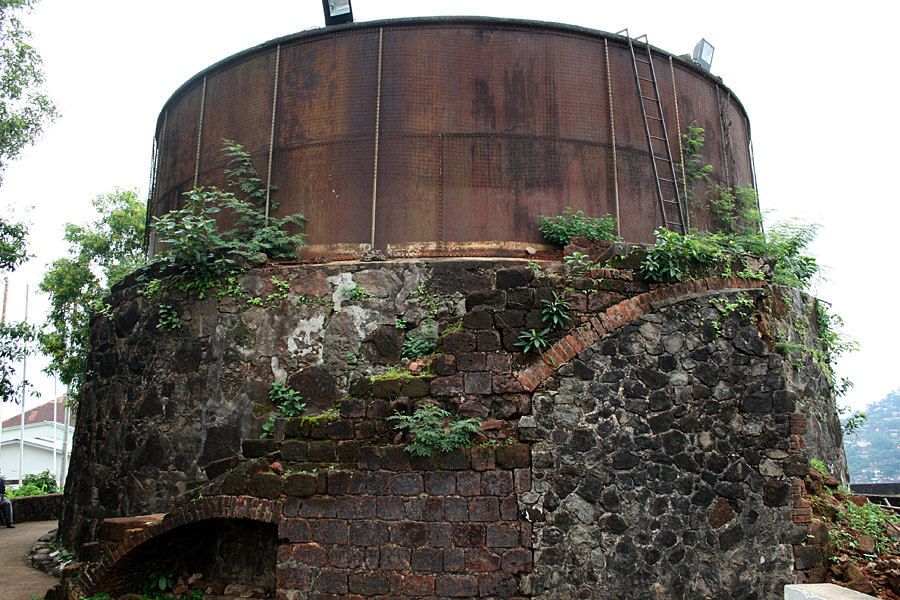
Photo: Visit Sierra Leone
The British Empire erected Martello towers as defensive fortresses throughout the 19th century. This particular tower was built in 1805 to protect Freetown, Sierra Leone, against offensives by the Temne people. It was constructed in the image of the Martello towers built along England’s southern coast to protect against Napoleon’s advances. Freetown’s fortress has allegedly never been used during battle, with no shots reportedly fired from the tower. In 1870, a water tank was added to aid in a water supply system, and today, the tower is considered a national monument.
45. Tomb of the Unknown Soldier — Somalia

Photo: MDOGAN/Shutterstock
This obelisk in Mogadishu sits in a park near what remains of the capital city’s presidential palace. Though simple, its meaning is profound: It’s a monument dedicated to the countless soldiers who have lost their lives during the ongoing Somalian Civil War.
46. Zeitz MOCAA — South Africa
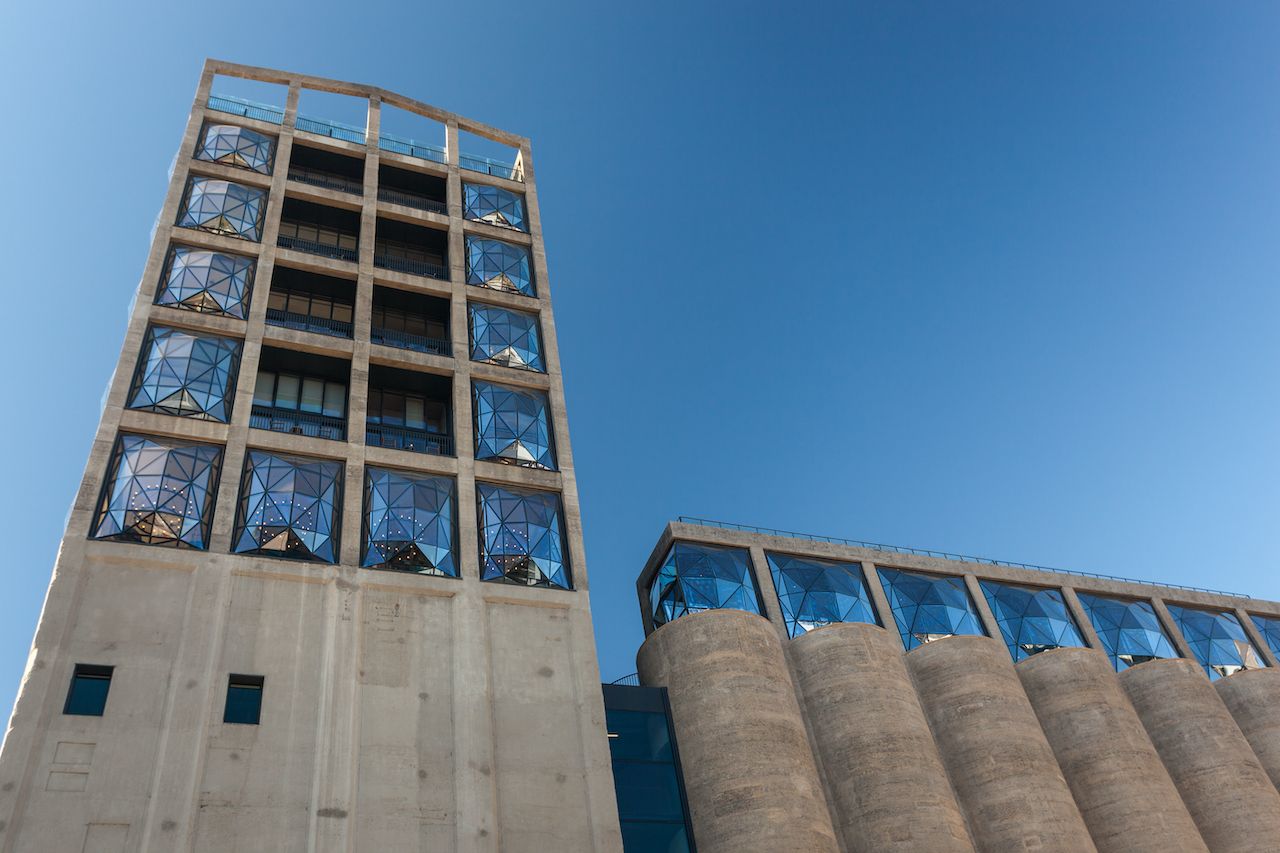
Photo: christianthiel.net/Shutterstock
South African architecture is well established compared to that of many countries on this list. The Zeitz Museum of Contemporary Art Africa, or Zietz MOCAA, joined the ranks of its defining landmarks in 2017. Located front and center on Cape Town’s Victoria & Alfred Waterfront, it claims the honor of being the world’s first major museum dedicated to contemporary African art. London-based design firm Heatherwick Studio repurposed the city’s old grain silo to create the space, carving an abstract, roundly geometric design from concrete in the main atrium. From the outside, thick, diamond-like windows showcase the savvy design of Togo-born artist El Loko.
47. Tukels — South Sudan
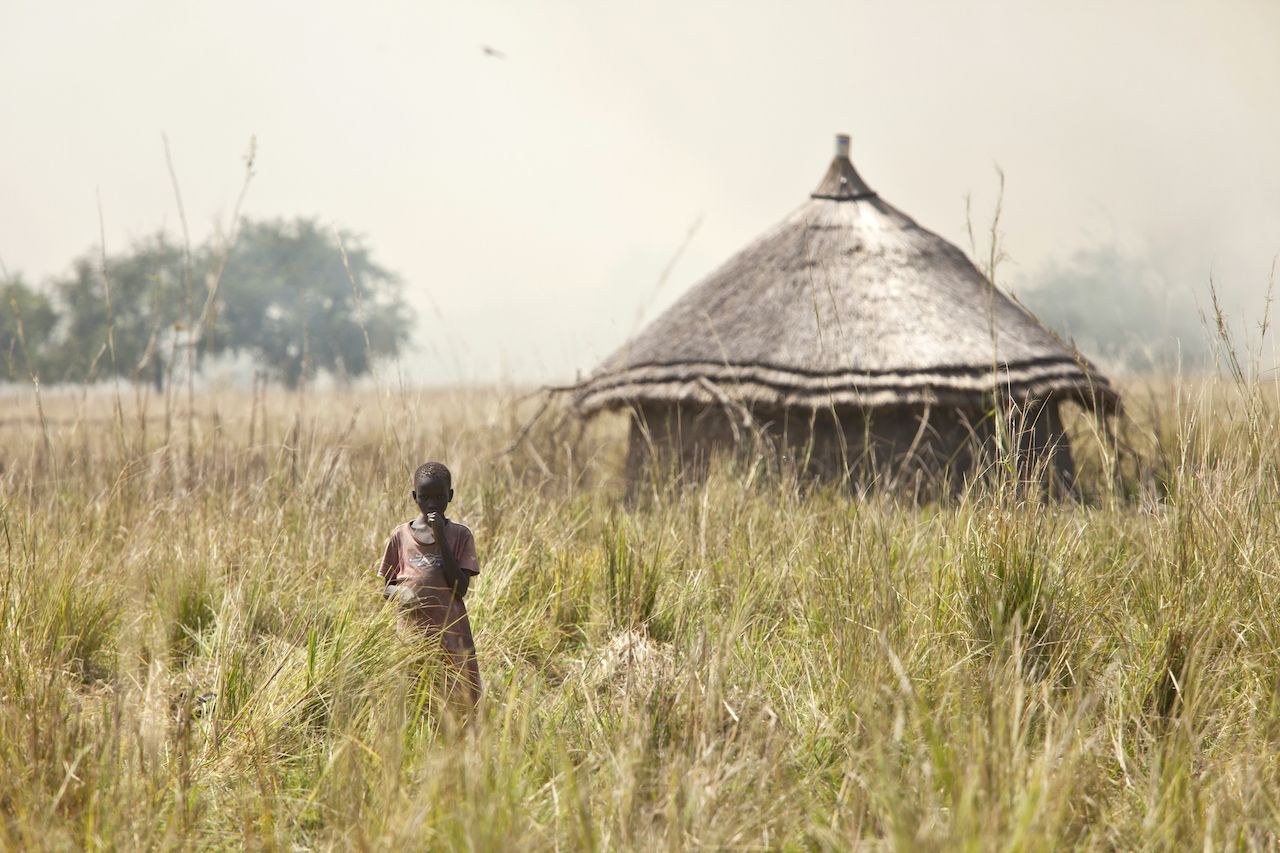
Photo: John Wollwerth/Shutterstock
In South Sudan, as much as 83 percent of the population, primarily represented by the Toposa people, live in traditional cottages called tukels. The beehive-shaped huts are made from mud and scrub brush, helped up by wooden frames that are woven together by twine or Dinka rope, and topped with thatched roofs. Also found scattered across the landscape are iconic Toposa granaries, which have a similar structure but are raised up on stilts.
48. Meroë pyramids — Sudan

Photo: Martchan/Shutterstock
Mention pyramids in the same breath as African architecture and most think of Egypt. Head south from Giza, however, and you’ll find an even greater number of pyramids situated along the banks of the Nile in Sudan. Though smaller than their more famous counterparts, the forgotten Meroë pyramids are equally impressive and similarly served as royal tombs for the monarchs of the ancient Kingdom of Kush. There are nearly twice as many Meroë pyramids, around 200 in total, the oldest of which dates back more than 4,500 years. Tall and slender, they’re an important example of Nubian architecture and earned Meroë a UNESCO nod in 2011.
49. Ishnashri Dispensary in Zanzibar — Tanzania

Photo: Sarah Lois/Shutterstock
Zanzibar is a semi-autonomous archipelago roughly 50 miles from Dar es Salaam off the coast of Tanzania. The main island, Unguja, houses the archipelago’s capital, Zanzibar City, and its UNESCO-listed center, Stone Town. Stone Town’s architecture is varied, representing the island’s Arabic, Indian, European, and, of course, East African influences. Details of each are visible in the Ishnashri Dispensary, which was commissioned by a wealthy Indian trader in the 19th century. Treasured for its intricate facade and teal balcony, stained-glass windows, stucco details, and neoclassical flair, the dispensary now doubles as a museum and cultural center.
50. Takienta tower-houses of Koutammakou — Togo
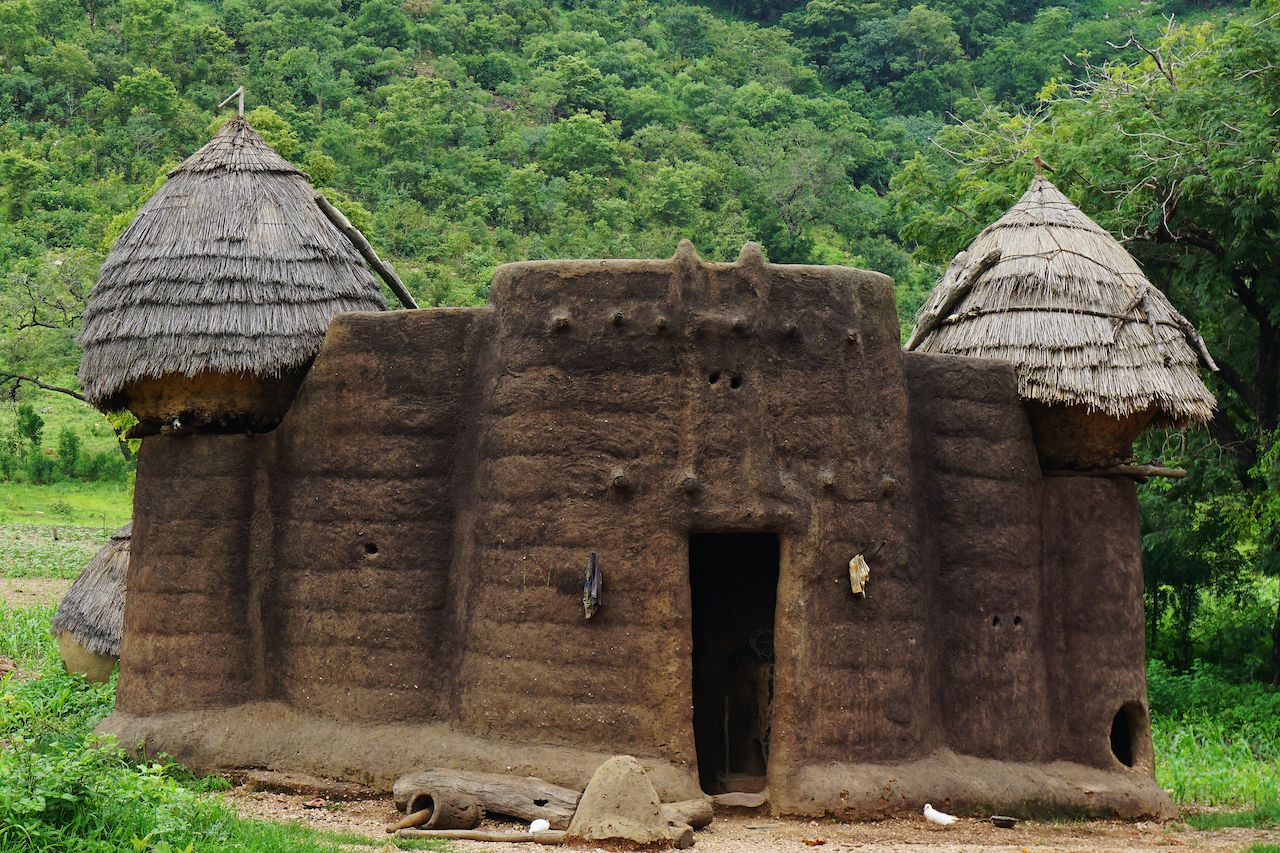
Photo: traveloskop/Shutterstock
Home to the Batammariba people of northeastern Togo and neighboring Benin, Koutammakou is a UNESCO-recognized cultural landscape that’s cherished for its takienta, or traditional tower-houses. The earthen dwellings often reach two stories and feature pointed thatched roofs. They reflect not only the harmony between man and nature through their use of local materials, as well as cultural cues like socioeconomic status, but have also become icons of Togo at large.
51. Hotel du Lac — Tunisia
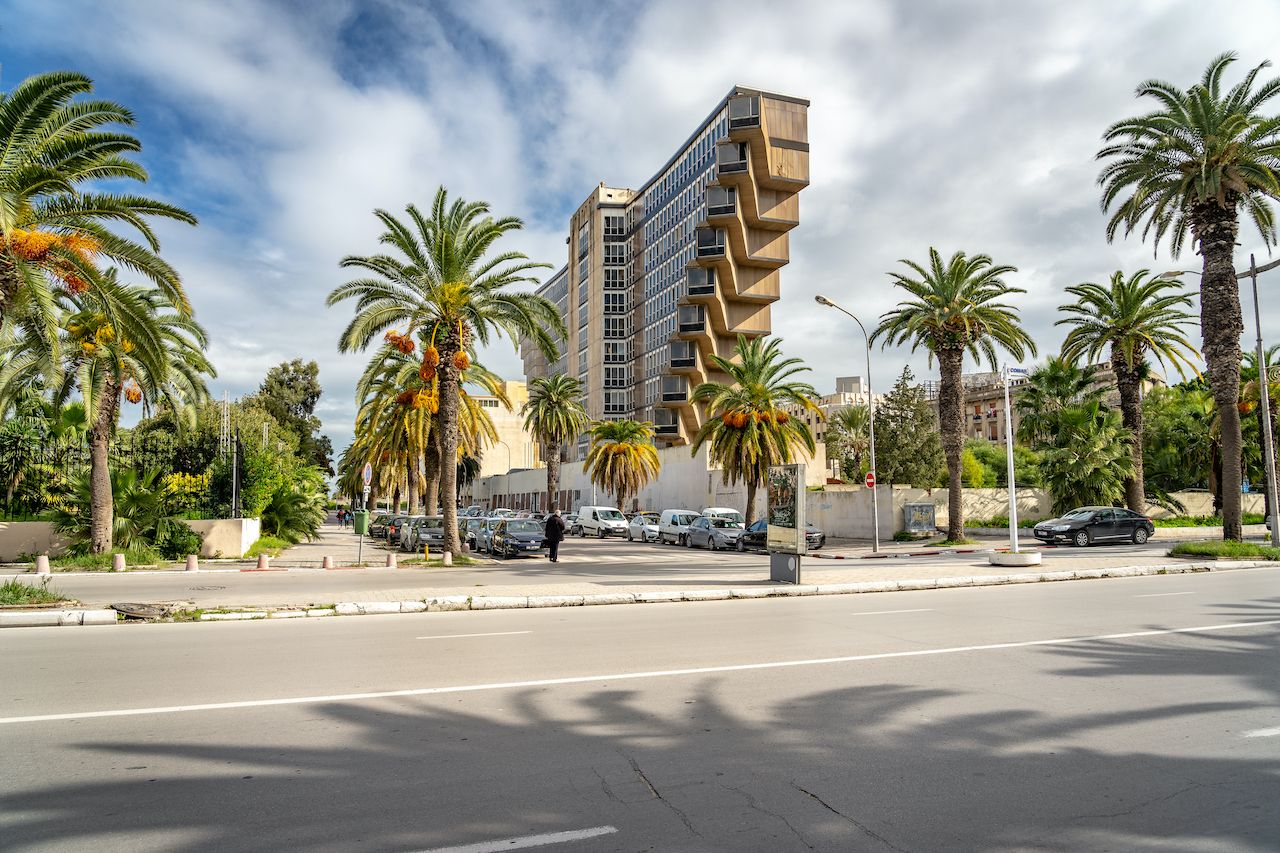
Photo: Alex Cimbal/Shutterstock
Tunisia’s capital, Tunis, plays host to one of the world’s finest examples of Brutalist architecture, a mid-20th-century modernist offshoot that’s characterized by plain, blocky, concrete constructions. Designed by Italian architect Raffaele Contigiani under Habib Bourguiba, Tunisia’s first post-independence president, the now-abandoned hotel resembles an inverted pyramid and employs an impressive cantilevered design. Some claim Hotel du Lac inspired the Sandcrawler fortress in Star Wars: Episode IV – A New Hope, which was filmed in Tunisia. (Tataouine, similar to the fictional planet Tatooine, is a real city in southern Tunisia.)
52. Kasubi Tombs — Uganda
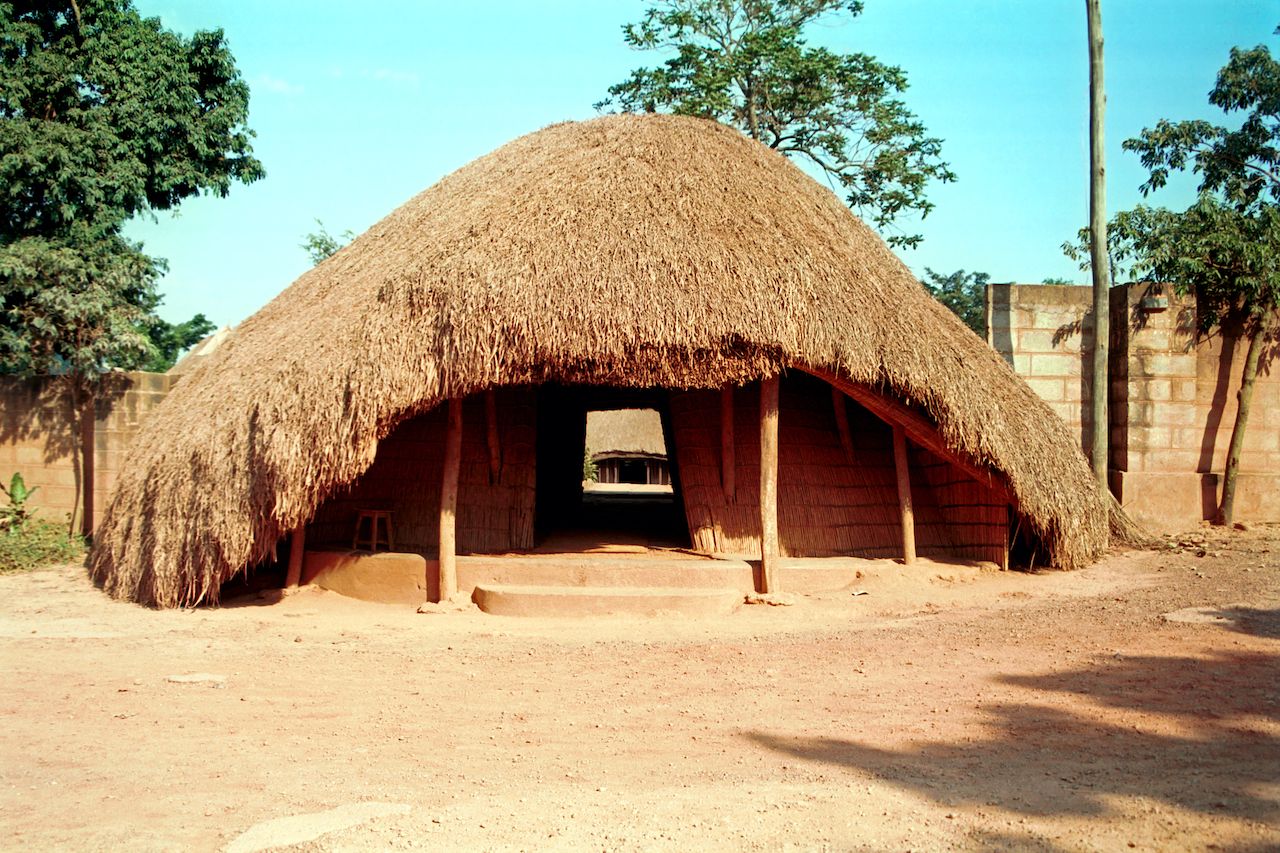
Photo: Attila JANDI/Shutterstock
Atop Kasubi hill in the Kampala district of Uganda is a palace turned burial ground for the kings, or kabakas, and other royals from the Buganda kingdom. The main structure, Muzibu Azaala Mpanga, houses four royal tombs. Erected in 1882, it remains an active place of worship, yet according to its World Heritage inscription, the site’s significance is also architectural as Muzibu Azaala Mpanga is entirely organic, made of wood, grasses, reeds, wattle, and daub.
53. Cathedral of the Holy Cross — Zambia
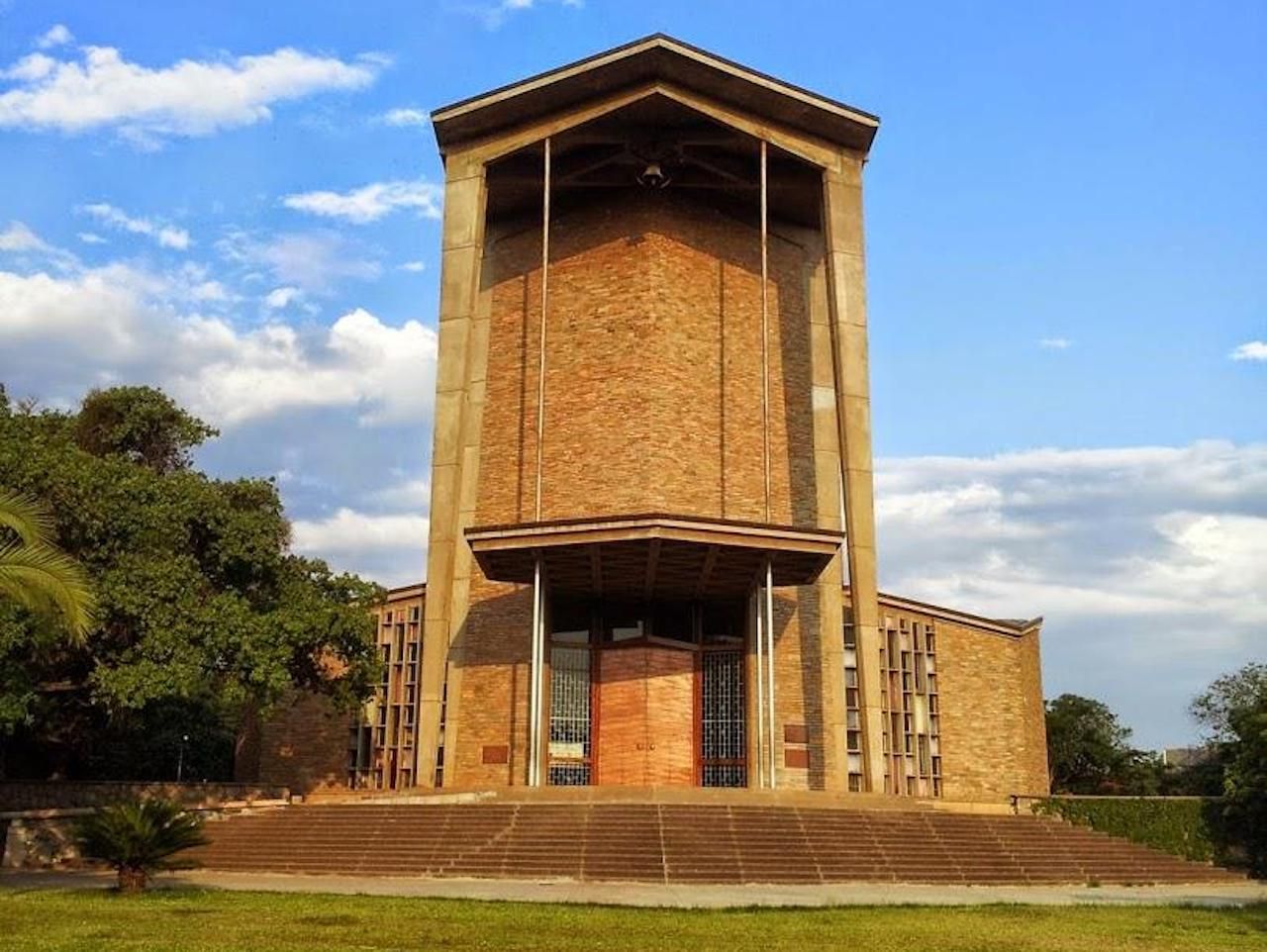
Photo: The Cathedral of the Holy Cross – Lusaka/Facebook
Resembling a water tower more than a traditional church, the Cathedral of the Holy Cross sits atop a hill watching over Lusaka, the Zambian capital, as the mother church of the city’s Anglican Diocese. Since 1962, the towering holy site has hosted regular Sunday service as the national prayer shrine, as well as events ranging from bible study to weddings to holiday mass.
54. Eastgate Centre — Zimbabwe
Zimbabwean architect Mick Pearce drew inspiration for the Eastgate Centre after seeing a video of David Attenborough walking among termite mounds in northern Nigeria. “We used the termite system as a kind of metaphor,” says Pearce, citing the ways in which termite mounds moderate internal temperature and humidity. Though the Eastgate Centre requires a small amount of electricity to cool the building through a fan-and-duct system, following a natural model enabled significant energy-saving by allowing Pearce, a sustainability-minded architect, to avoid using refrigerant-based air conditioning and incorporate efficient, eco-friendlier lighting.
